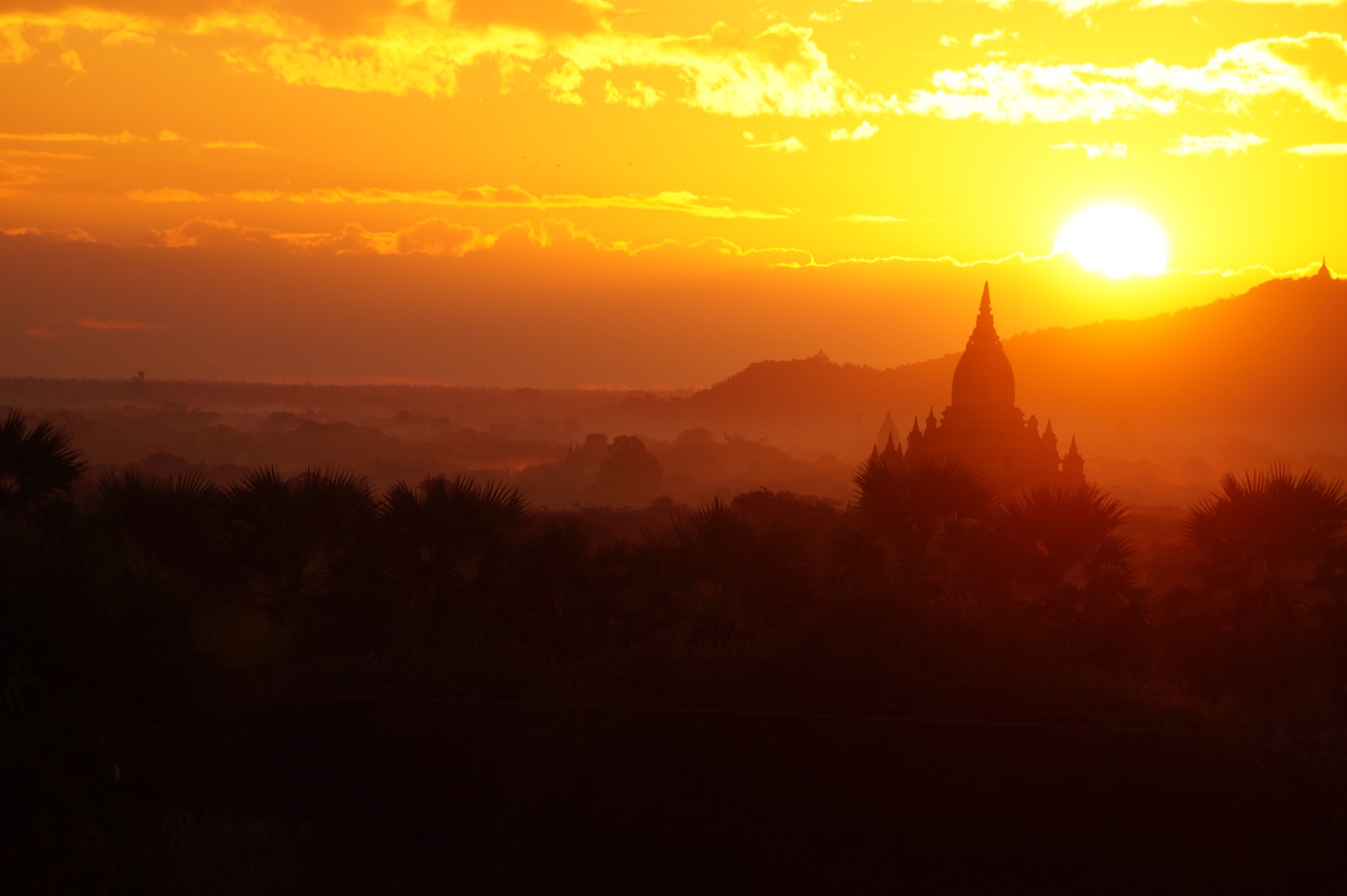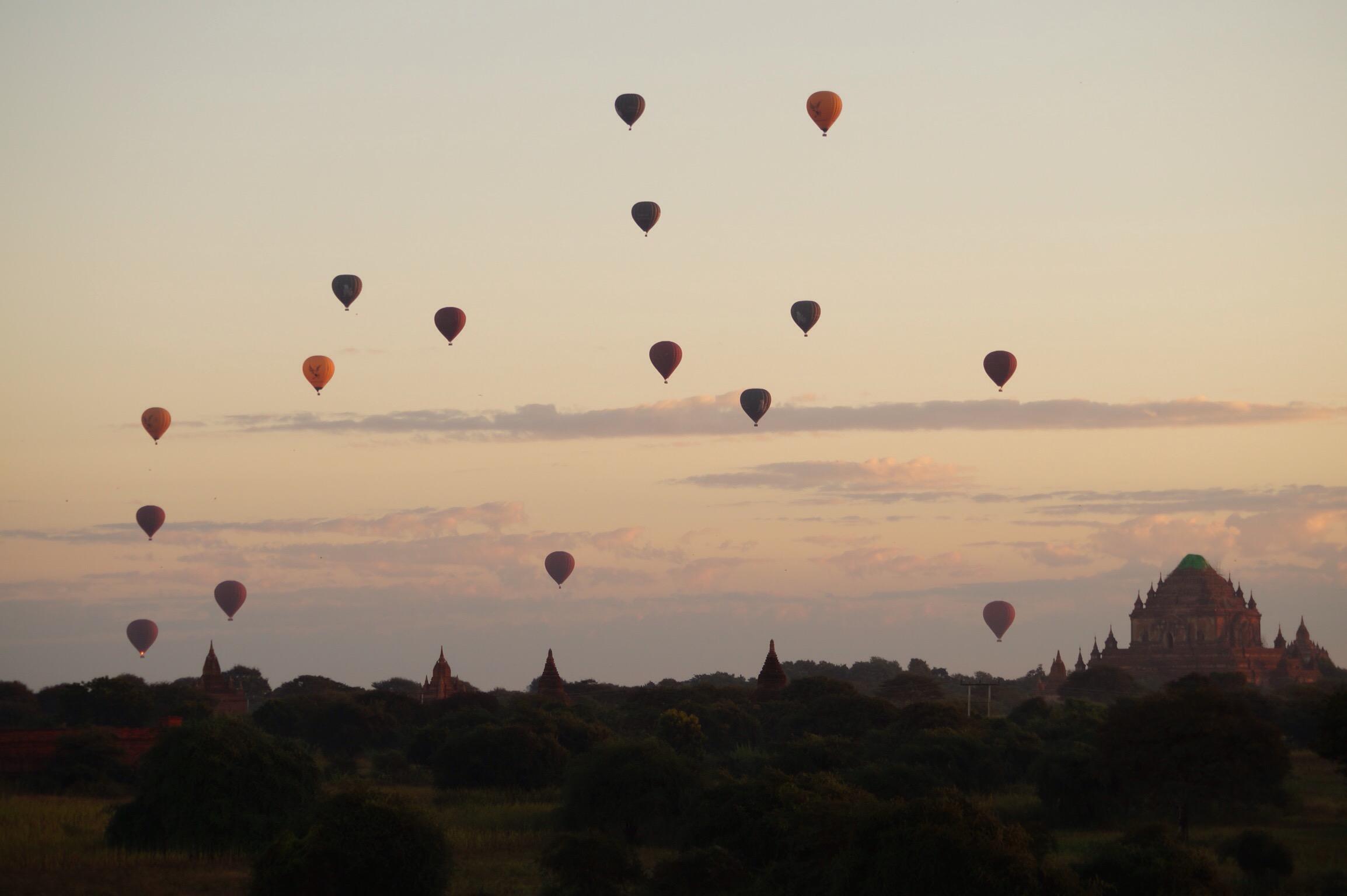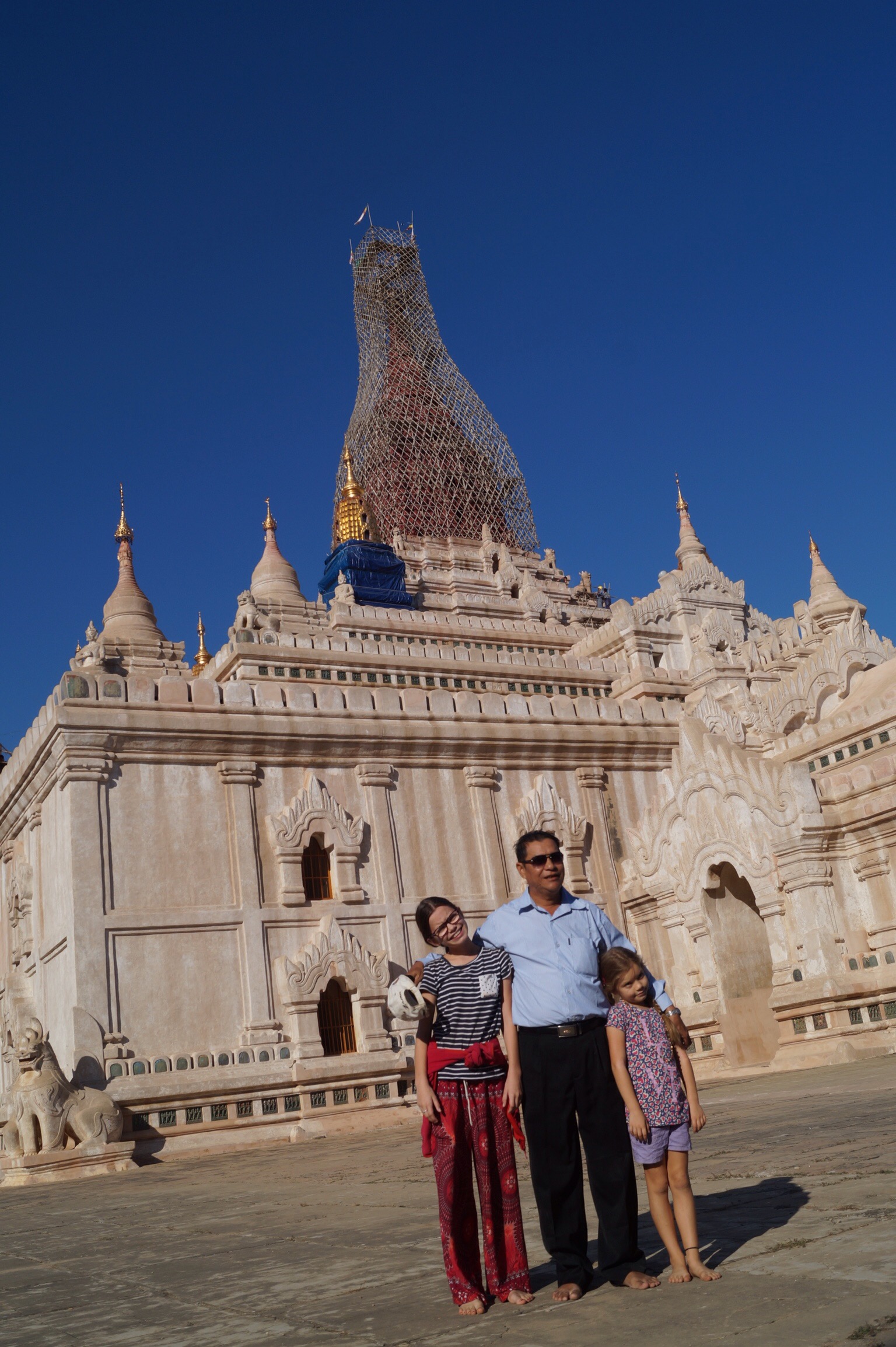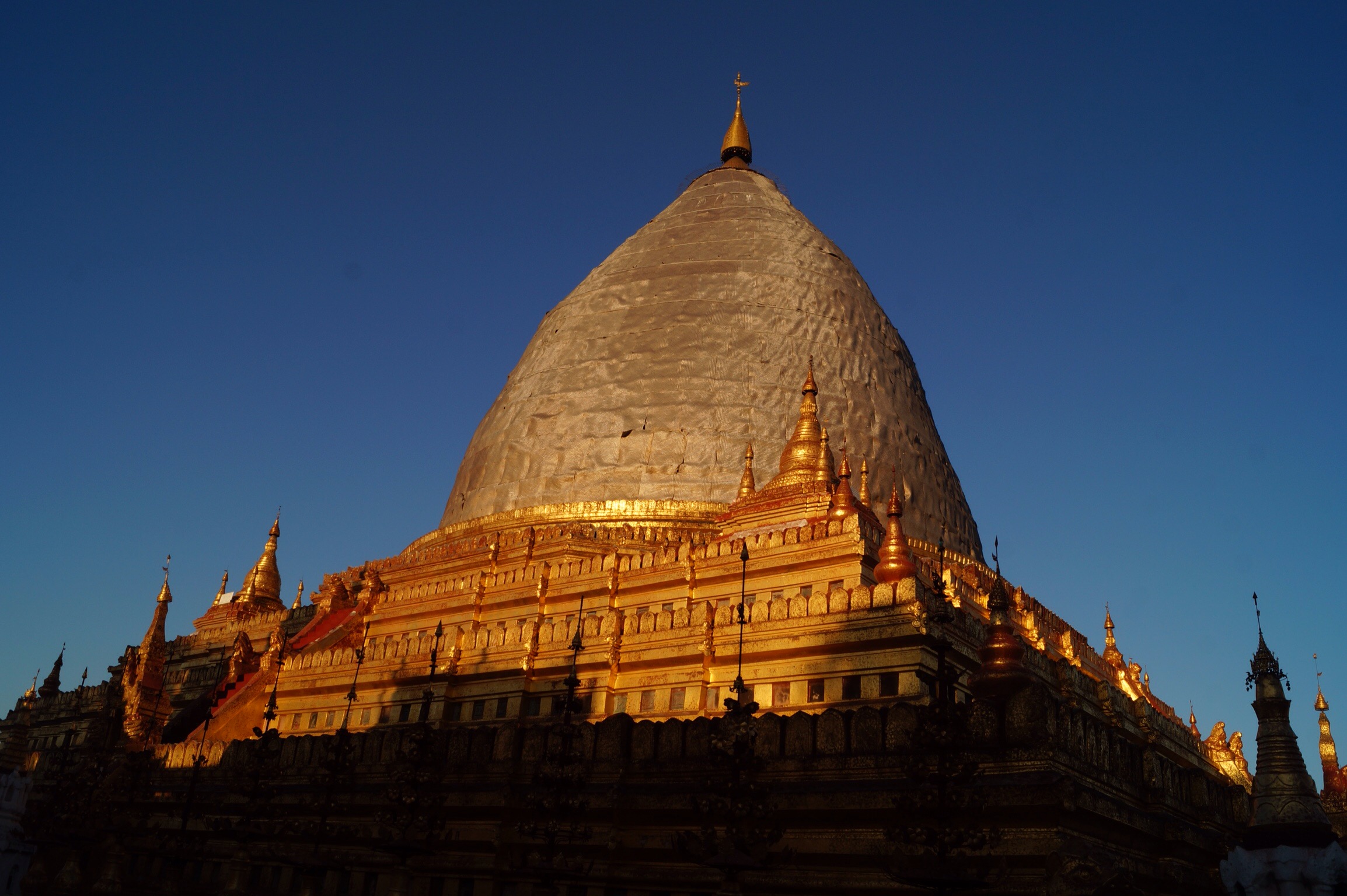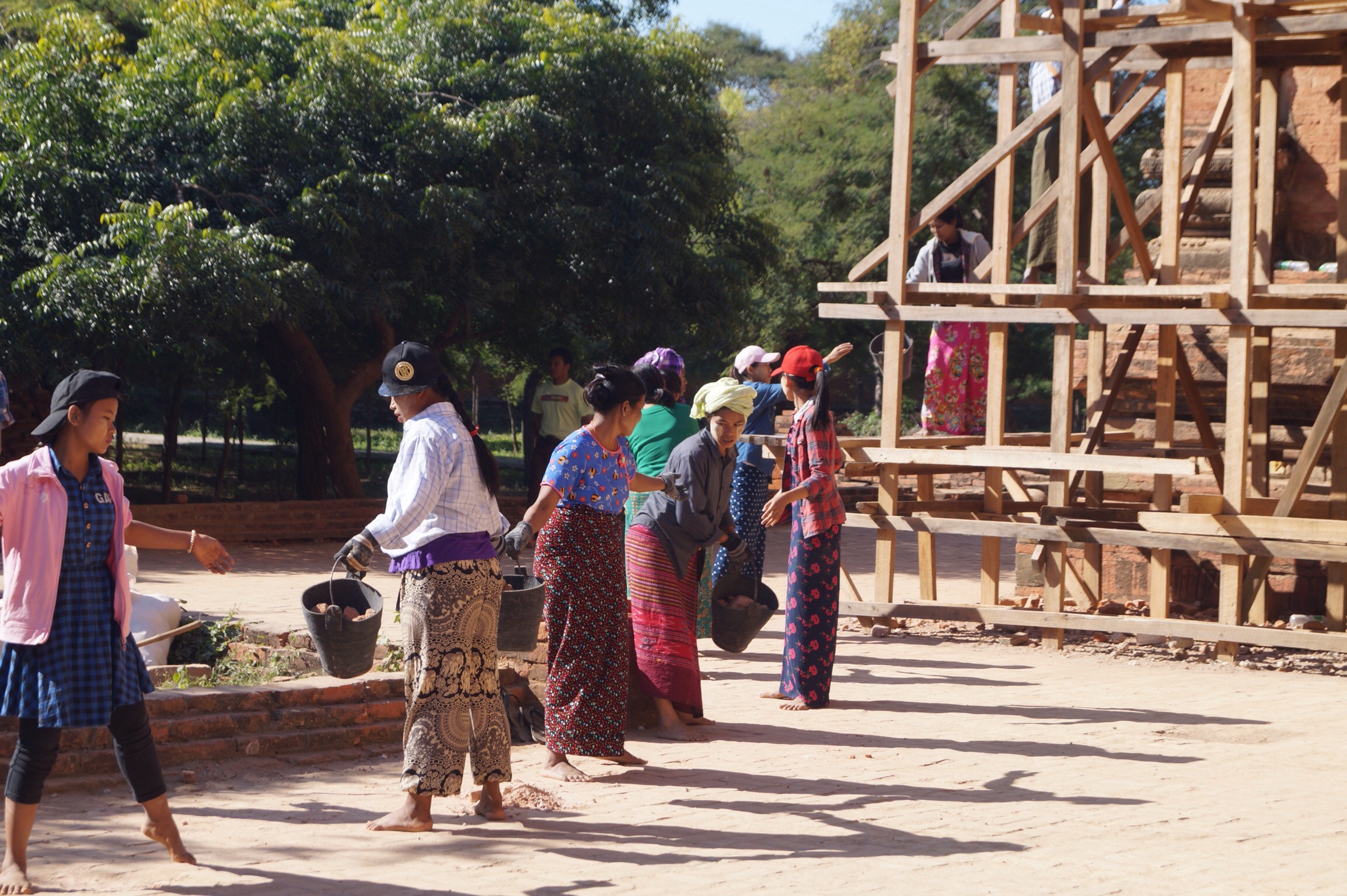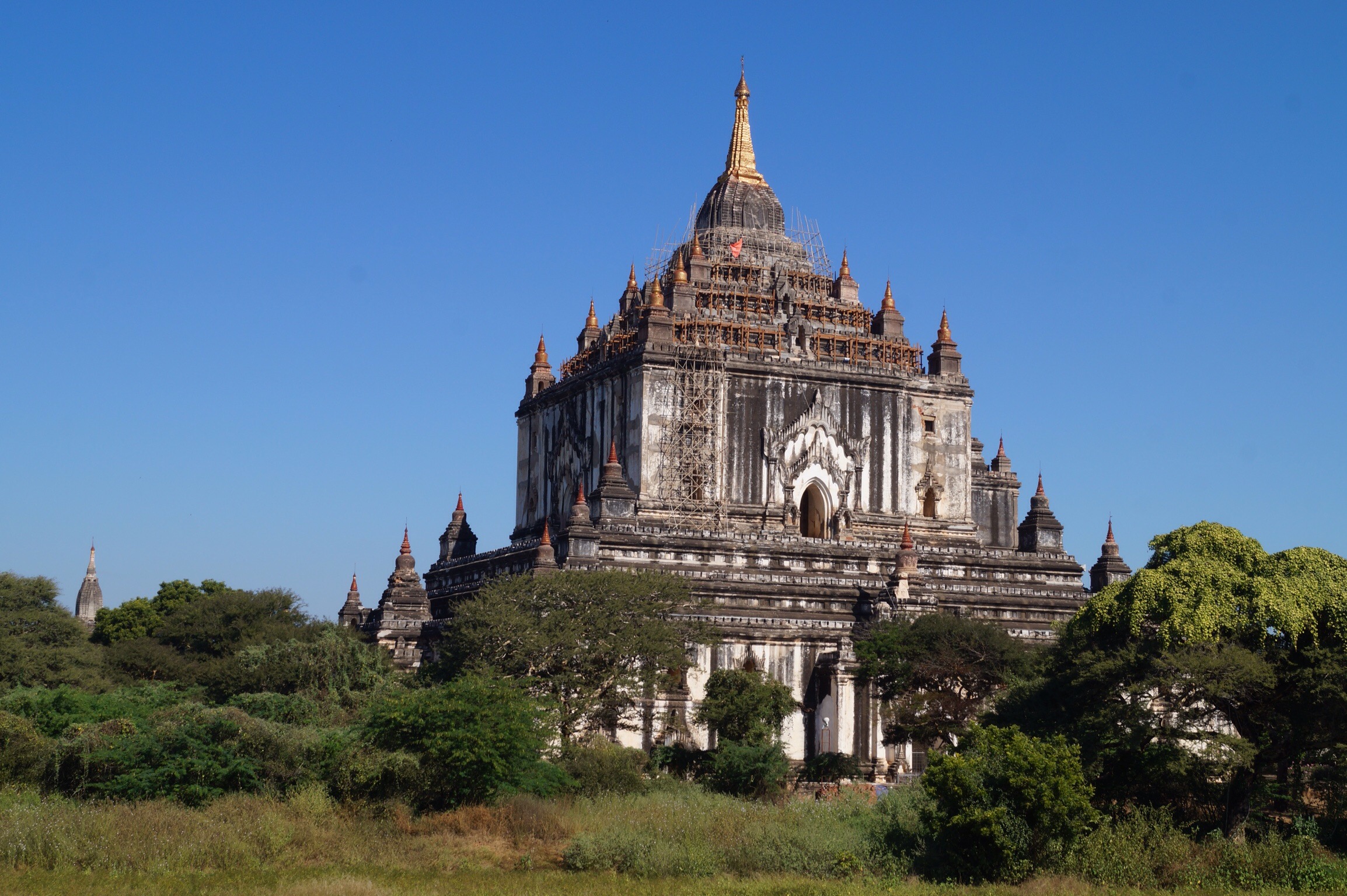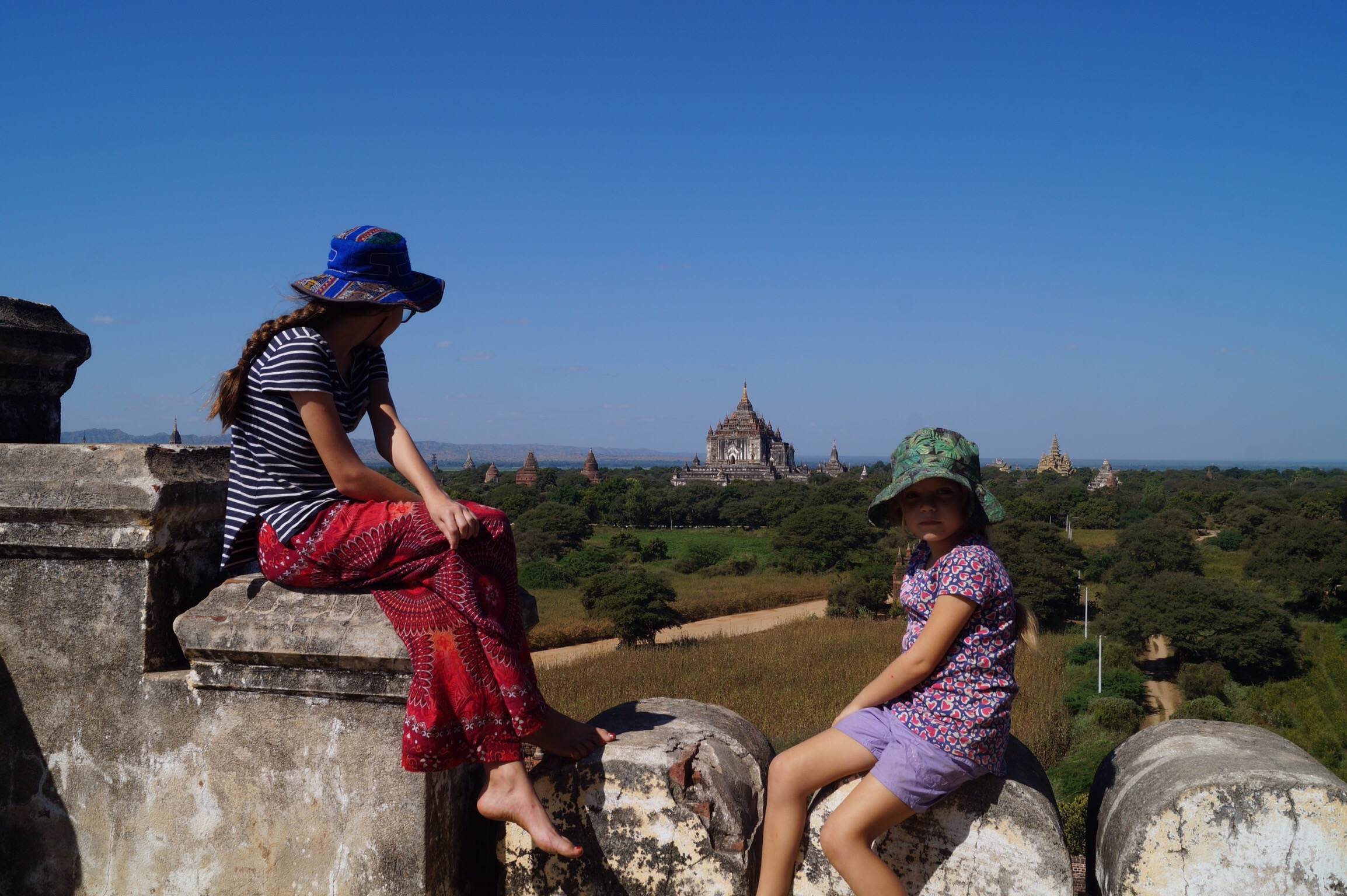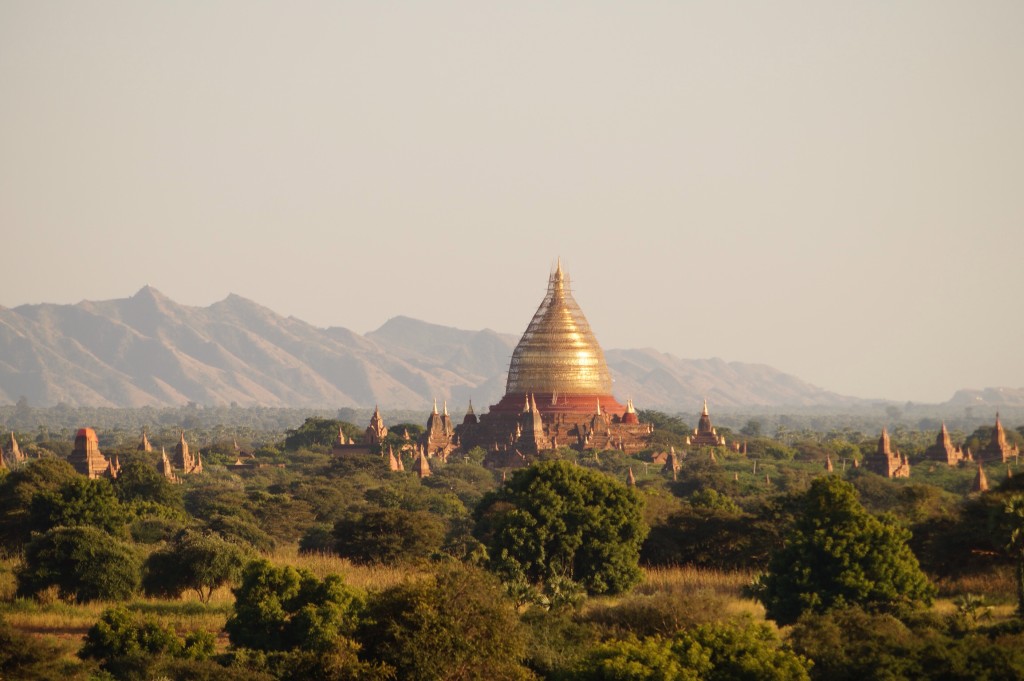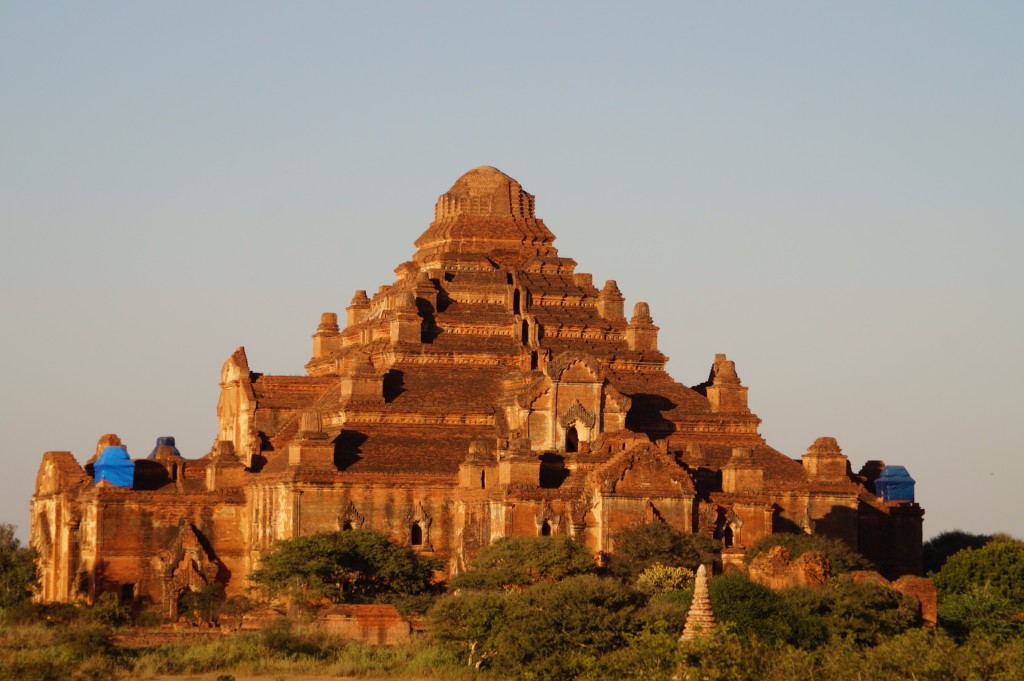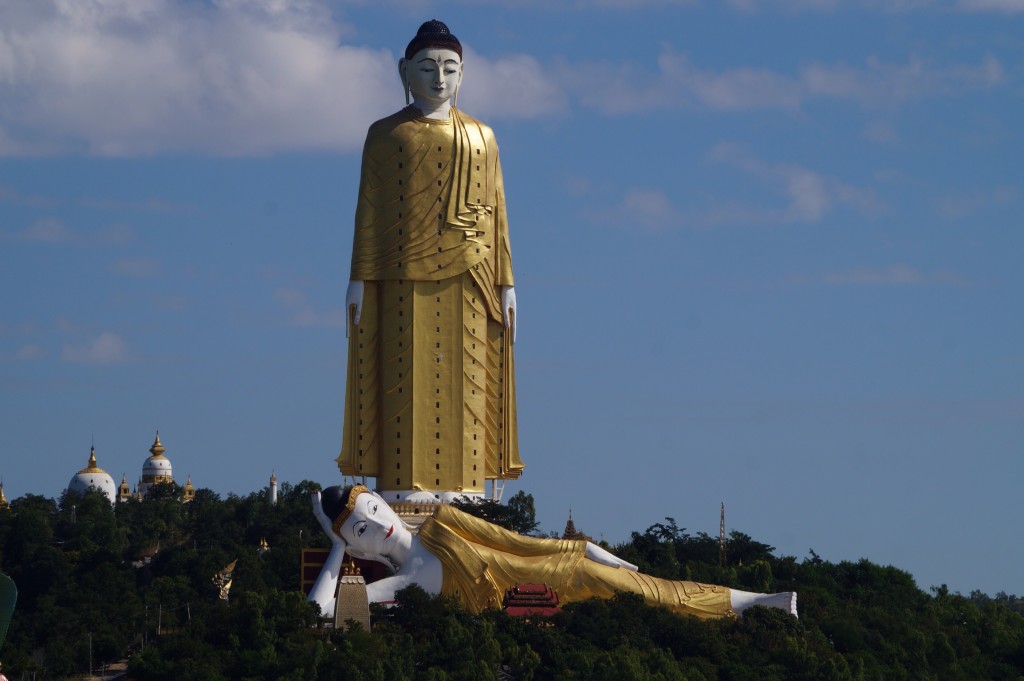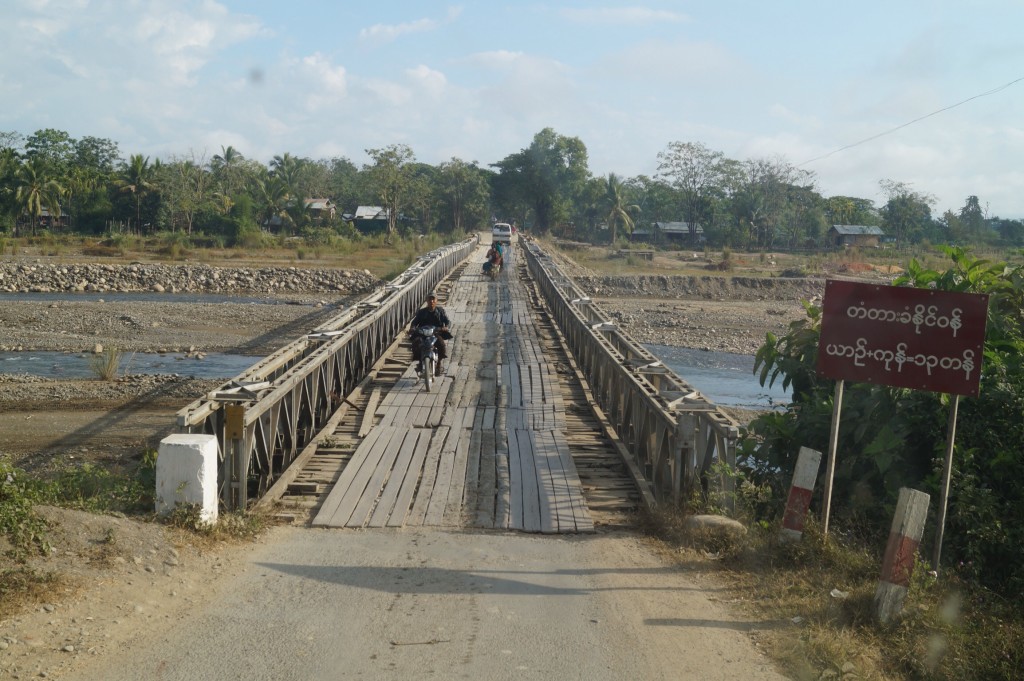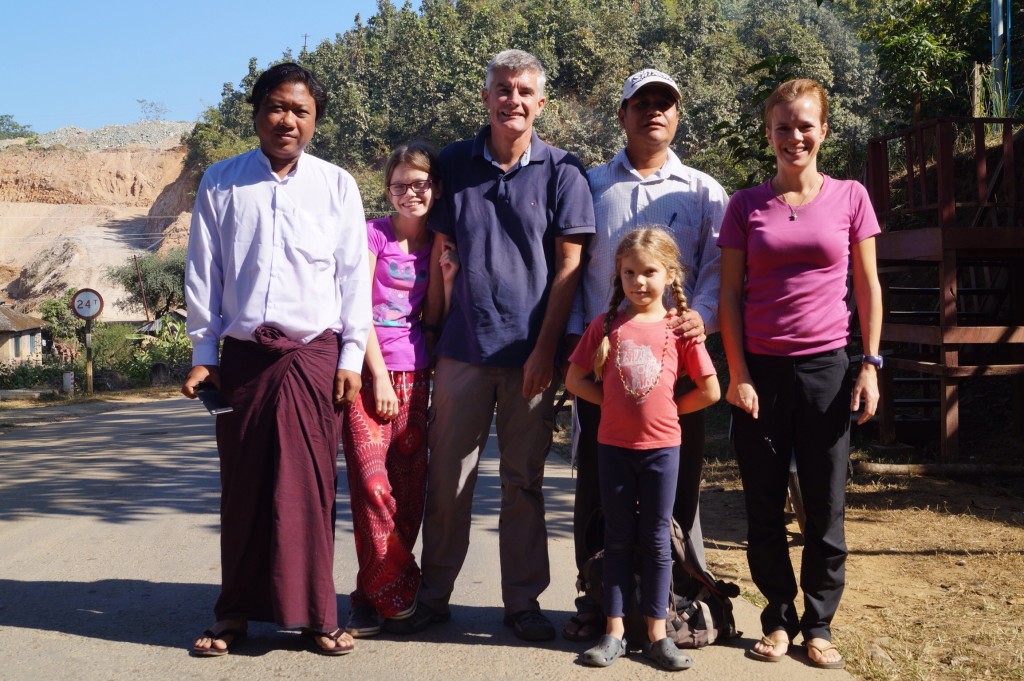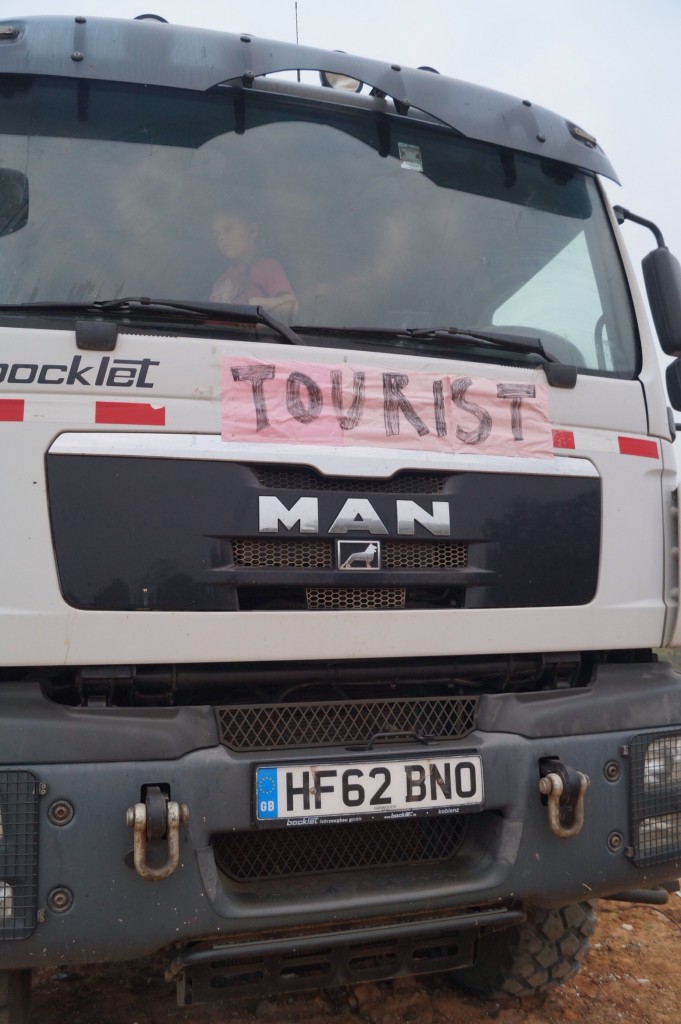It couldn't have been a more different capital city driving experience. Leaving the old capital city of Yangon everyone pushed and shoved as three lanes of traffic squeezed into two. A pick up truck filled with old bicycles piled higher than the height of the truck pushed in front of us, wobbling precariously. Meanwhile motorbikes filled with people and shopping; trucks belching diesel smoke; and motorbike taxis piled twice their height with goods all staked their claim on the road with a chorus of raucous honking. We quickly lost our guides in the van, as vehicles squeezed in between us (to cross Myanmar we have to be escorted by a tour agency and a government official).
6 hours later, we cruised into the new capital of Nay Pyi Taw on an 8 lane highway. We sailed past our hotel, in the "Hotel Zone", to make our way to the Parliament building. Usually with the truck we try to stay away from city centres due to our size but in Nay Pui Taw we had no such reservations as the 8 lane highway turned into a 20 lane one, with only our escort van in sight. Where were all the people? The place was like a ghost town.
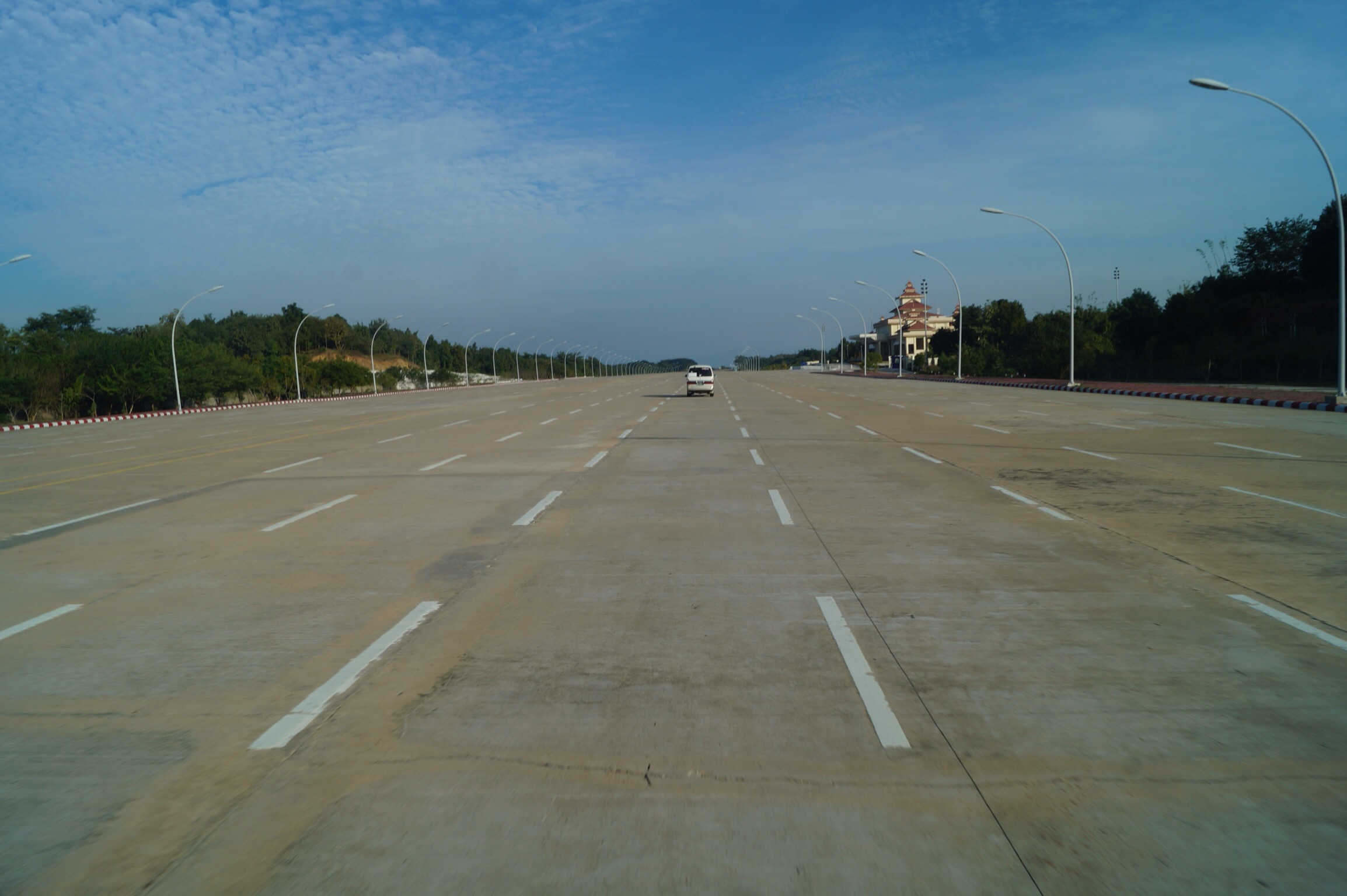
In 2005, the Military Junta announced that they were going to build a new capital city closer to the geographical centre of the country. Built on scrub land and rice paddies with just a few villages nearby, it was "finished" in 2008. The name translates as "Royal City" and cost untold expense. Quickly built, parts of it are already showing their age. The hotel we stayed in had all its smart marble tiles up in its huge entrance way, as they were coming unstuck from the floor. Meanwhile the top floor wasn't fully fitted out yet. Driver Kyaw drove us the 30 mins to the "Restaurant zone"' there were a few more people out zipping down the huge highways in their cars and motorbikes. We stopped for quick look from the van at Uppatasanti Paya, a pagoda built by the senior General Than Shwe as an exact copy of Shwadagon Pagoda in Yangon, apart from it being a foot shorter. The city, although bizarre wasn't completely unpleasant it was green with trees bordering all the highways, but I know which capital I prefer. It seems like businesses and the diplomatic community feel the same way with the vast majority of them staying in Yangon.
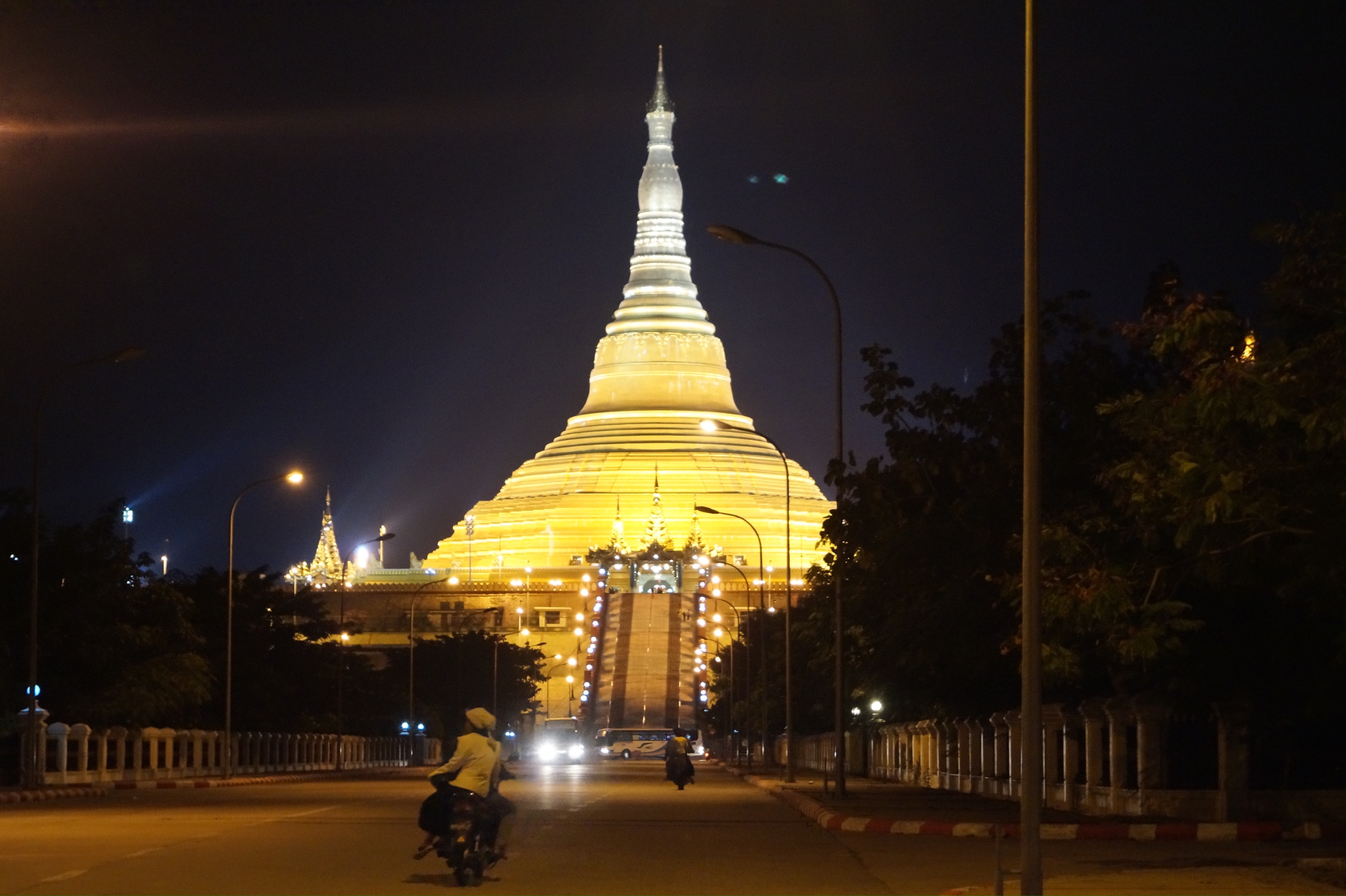
Once out of the melee the previous day, we had all been on the boring but smooth Yangon to Mandalay highway, Steve got to use the truck's cruise control for the first time since Malaysia, but now we were back on the normal highway. Through villages with bikes, trucks, school kids and bullock carts just wide enough for 2 cars to pass. We watched Guide Kyaw jealously as he zipped their little van past slow rumbling trucks, while we had to wait for the road to become wide enough and for there to be no motorbikes in the way. We then wound our way up through the hills. Arriving in the town of Nyaungshwe, Kyaw asked around to find us somewhere for us to park, there are definitely some upsides to this guided tour lark, it makes a nice change not struggling with a few words and lots of mime. In the end we ended up in the tidy garage of their hotel. After a tiring drive it was good to sleep in our own beds, our first night in the truck since we got to Myanmar. That night we were serenaded to sleep by the garage boys harmonising to their acoustic guitar.
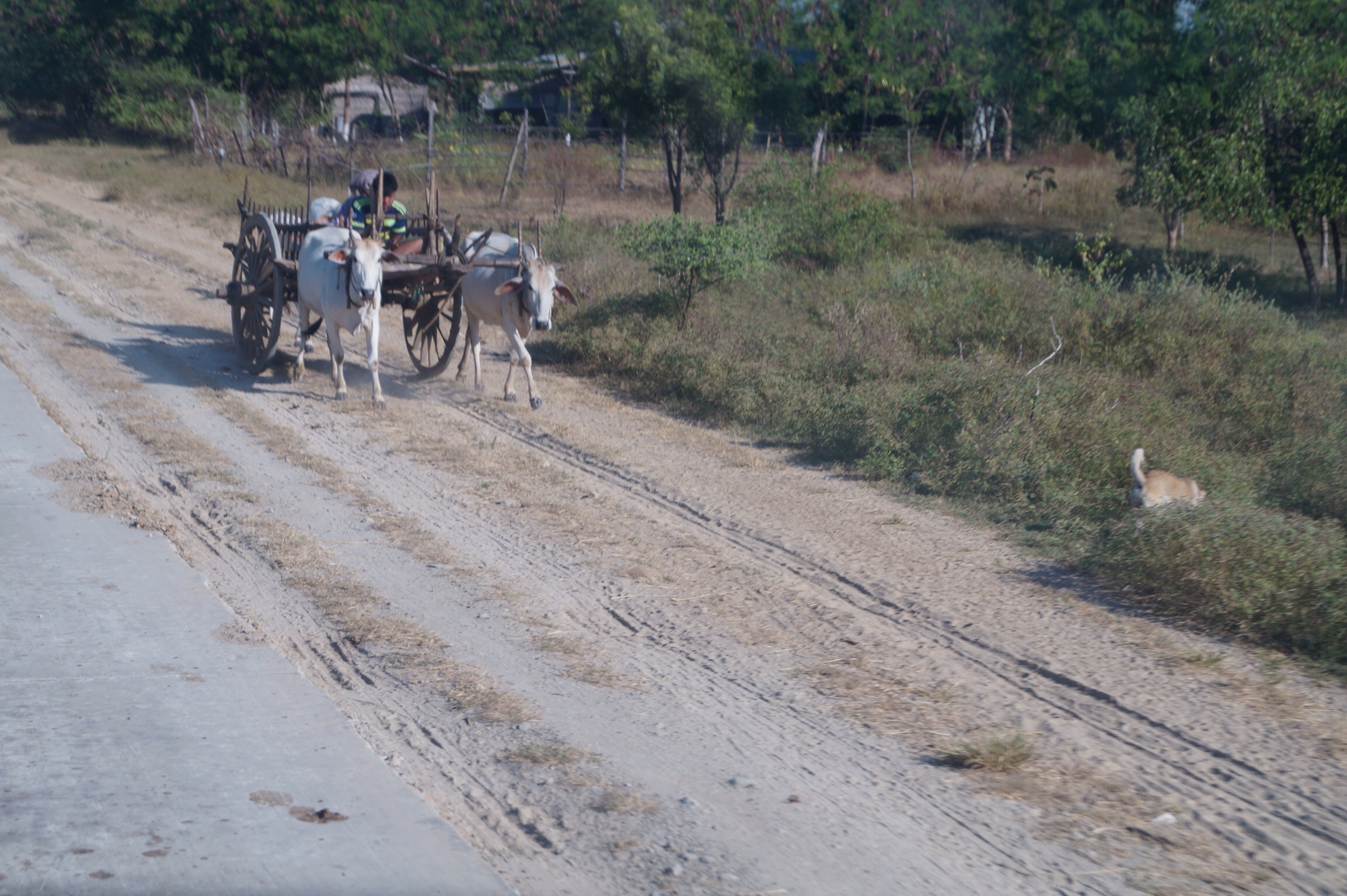
The next morning we were awake to see the monks out collecting alms, over the fence from the comfort of our bed. Tante, our government official, turned up with a local colleague who had kindly brought us a huge pile of bright red pork rice wrapped in banana leaves, herbs, chilles and fish sauce. We are slowly coming round to the Asian idea of eating what we would consider lunch and dinner food for breakfast. In all the hotel breakfast buffets there are noodles, rice, vegetables and meat all with copious amounts of garlic and chillies. Even so there was far too much for one family to eat, but it made a good morning snack for the singing garage boys. Then we were ready for a full day out on a boat around Inle Lake. A few minutes in, more snacks were handed out: "Oh no, at this rate we are going to sink the boat". Thankfully not, they had sweetly brought snacks so the girls could feed the gulls.

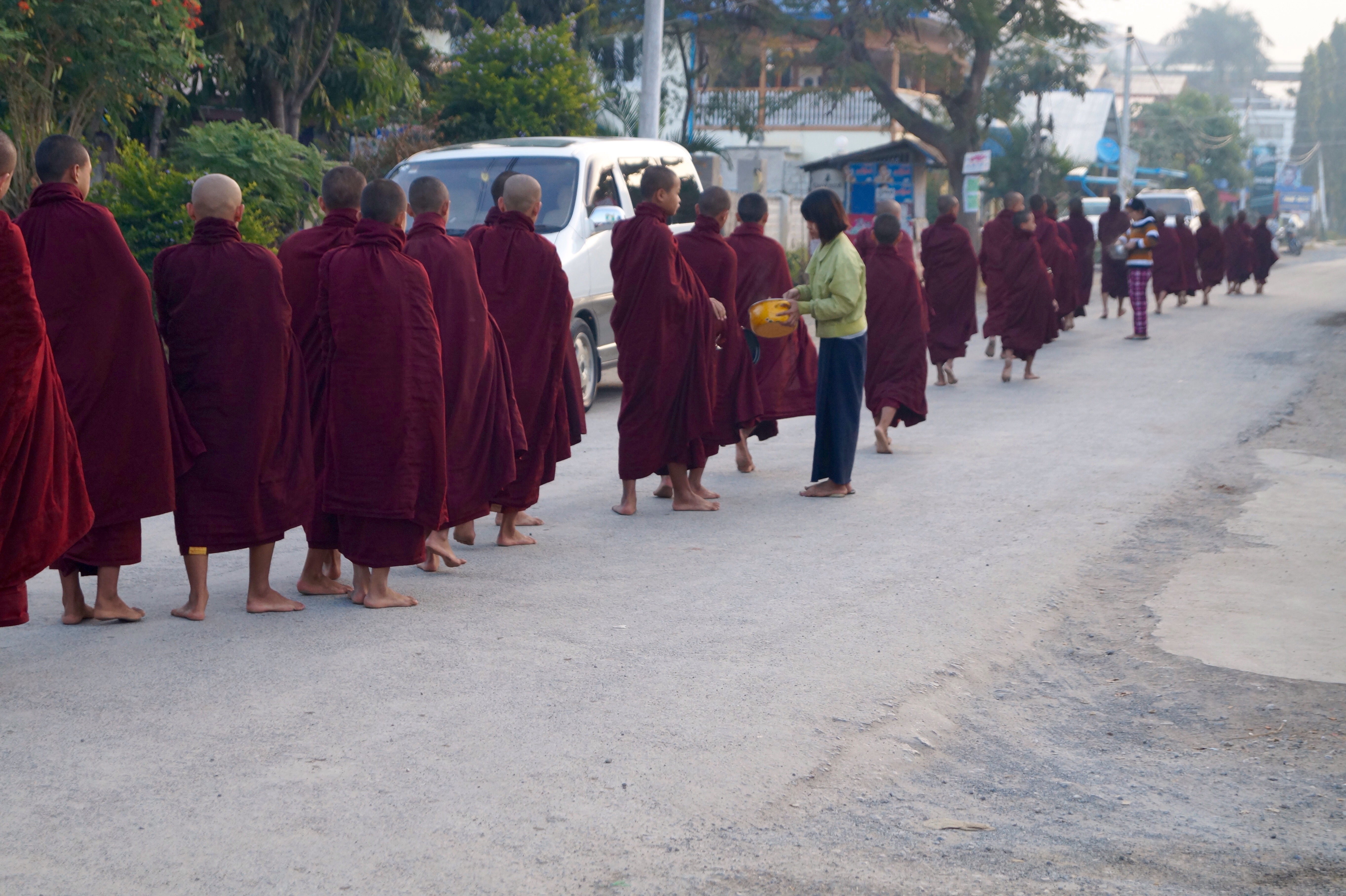
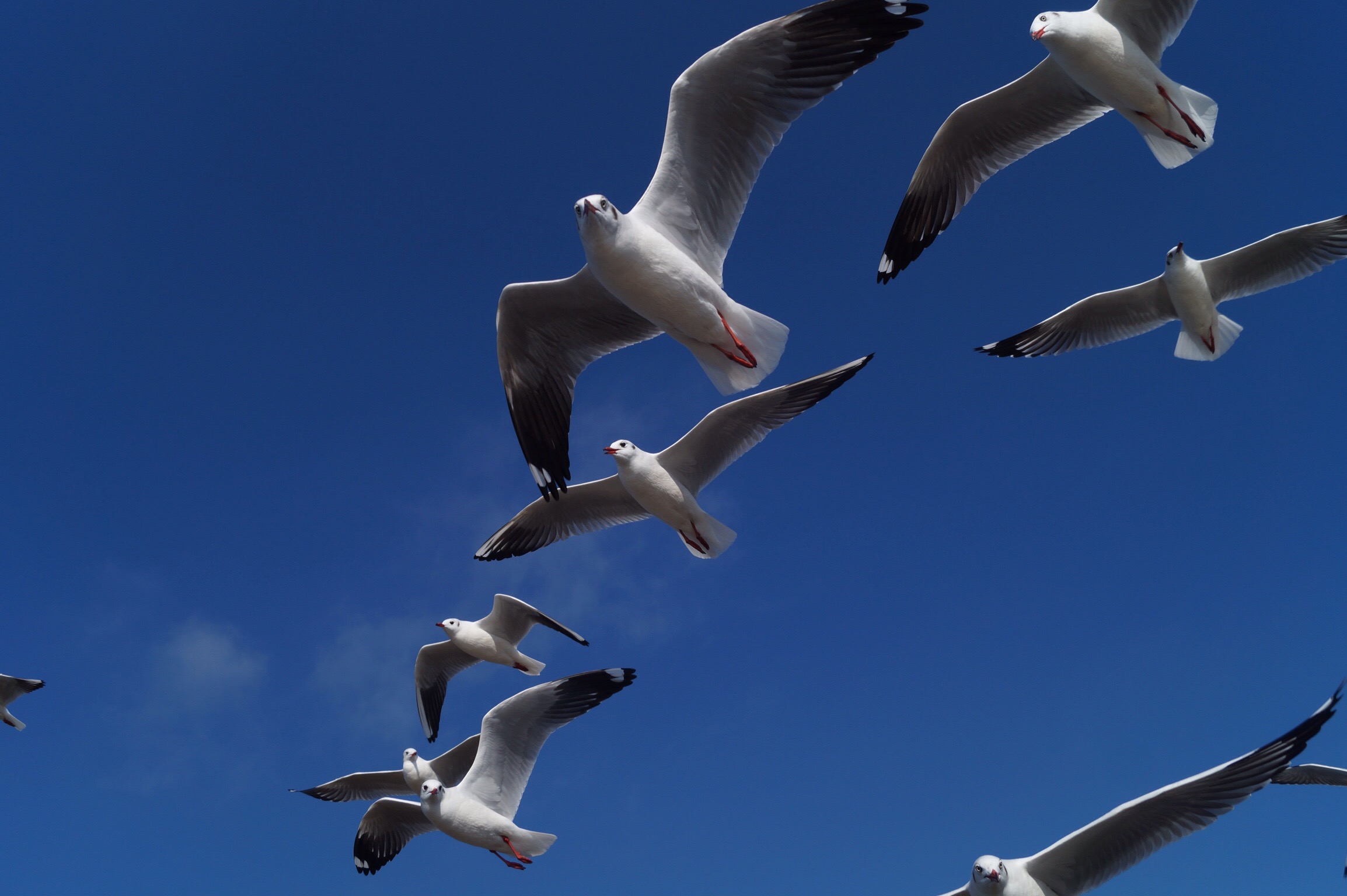
We got our first sight of the unique rowing technique of the fishermen on Inle Lake, to keep their hands free to handle their dome-shaped nets, they row with their legs. It's not a natural looking movement but it seems to work for them.
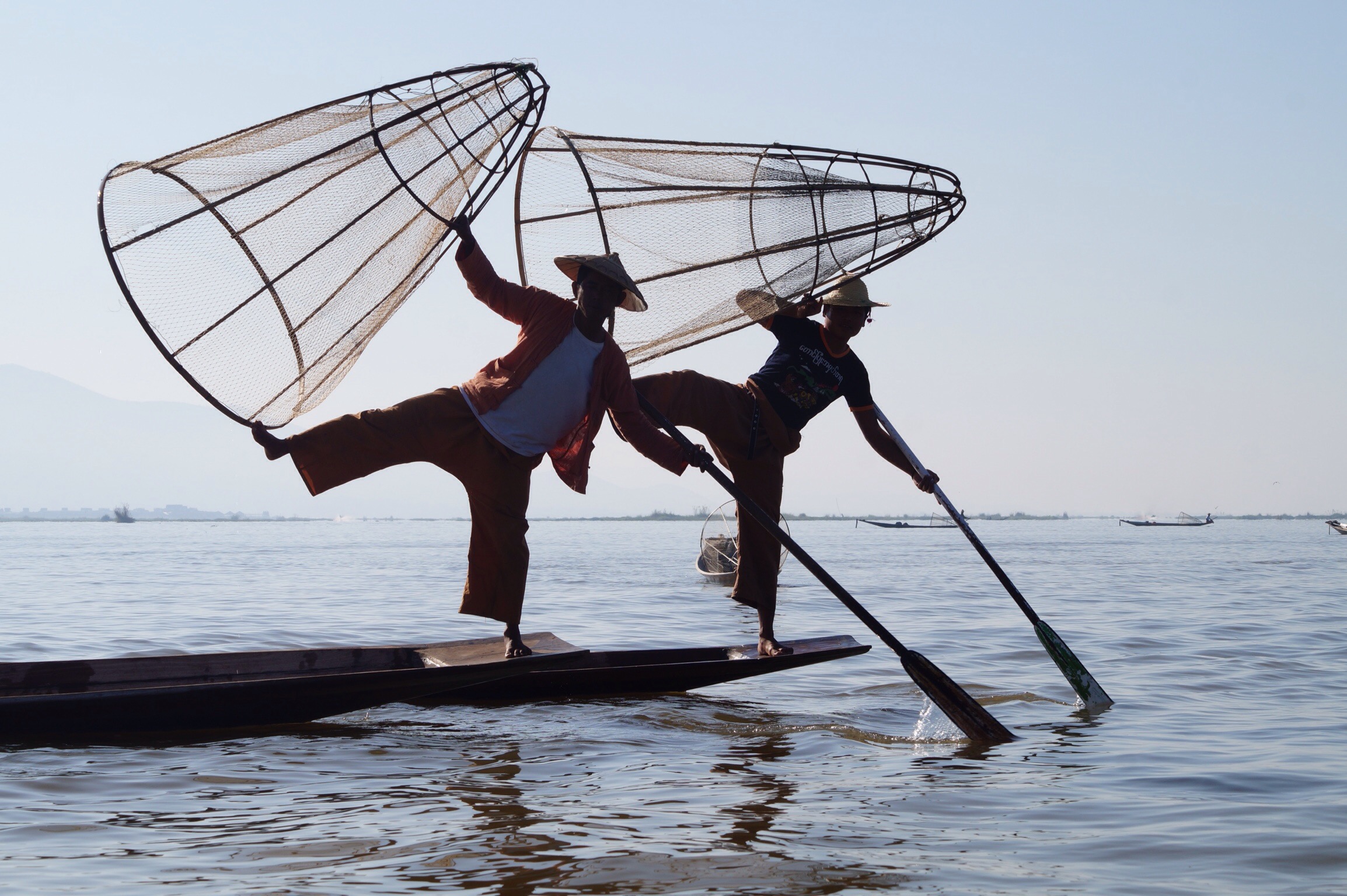
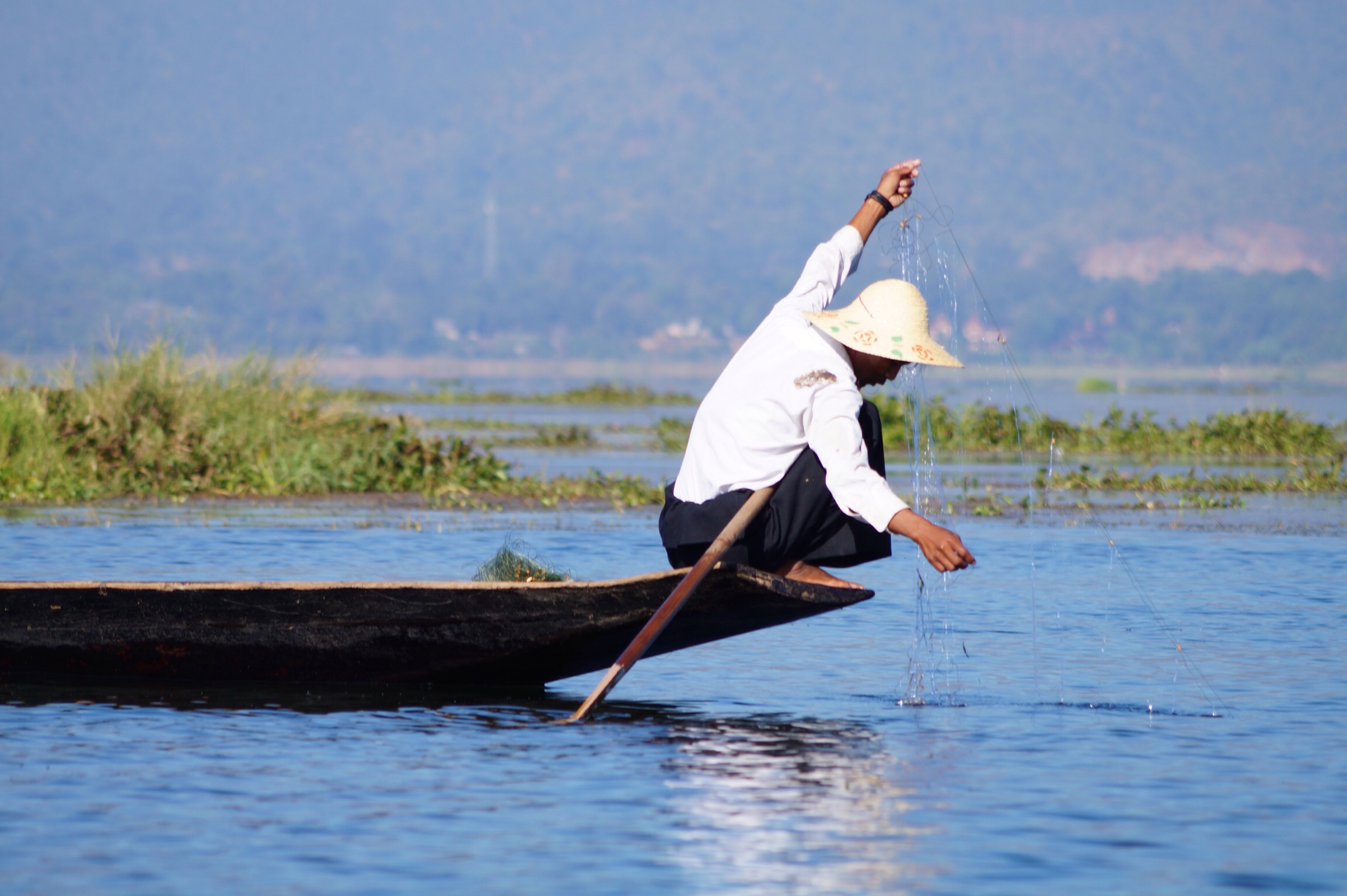
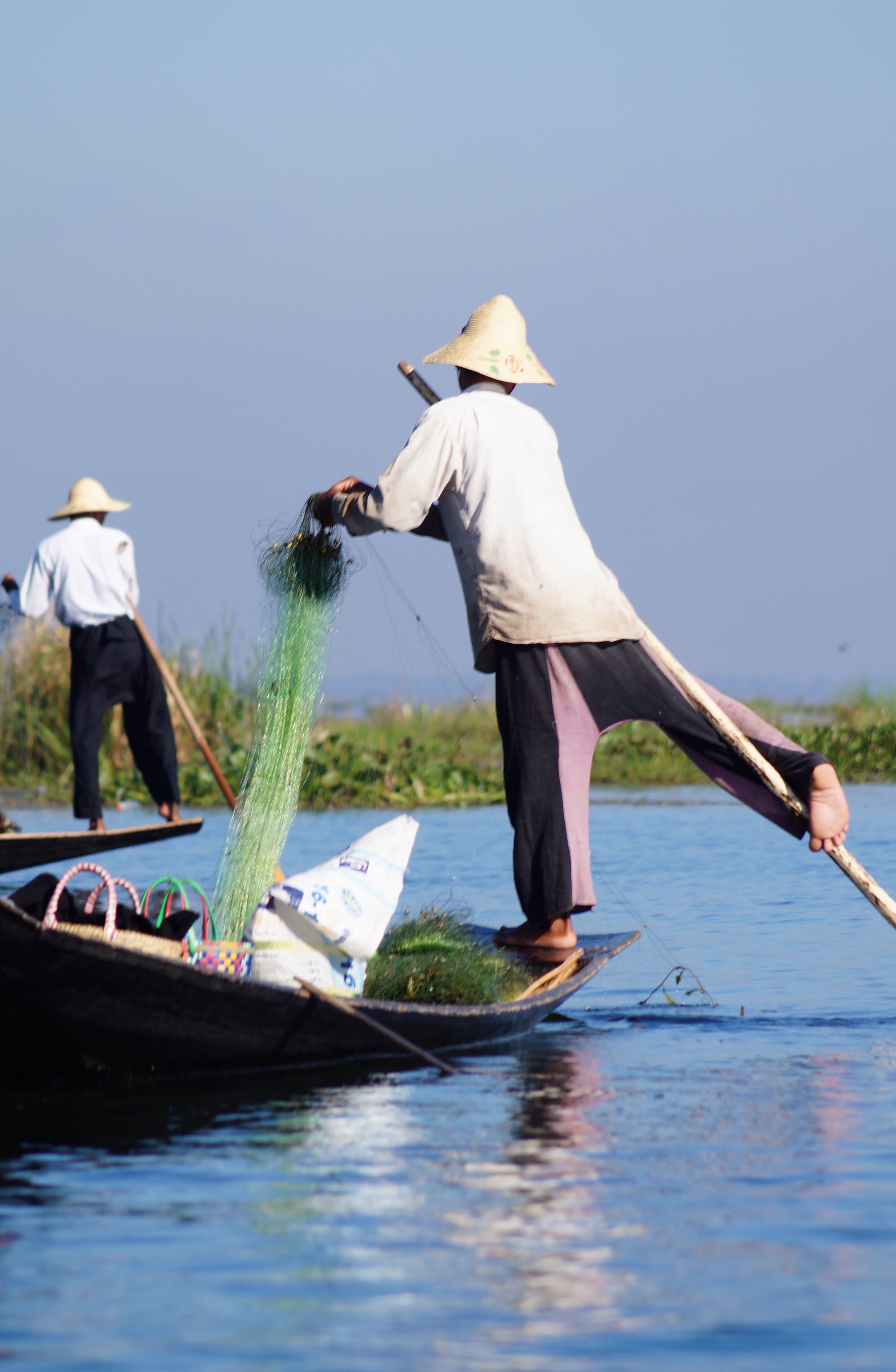
On different days of the week a market is held in a different village. Parts of the villages are on islands or on the lake's edge and other parts are on stilts. Most of the getting around is done by boat. We saw a hardware shop and post office completely over the water. The only way I could see to get to the school on a little island was by boat. The market held in an island pagoda was fun with vegetables, food and quite a few souvenirs for sale. We spent the rest of the day tootling around the lake, stopping off at various workshops. Inle Lake is one of the most popular places in Myanmar to visit, although it is so big it never felt crowded. We just enjoyed seeing it all and hearing about life in Myanmar. It's rare that we visit places with a guide, as they can give too much information for the girls. However they love being with Kyaw and asking him questions, he is very sweet with them, listening to their stories, teasing them and chasing them when they get bored. The other Kyaw, the driver, even through he speaks only a little English, is very good with them too as he has kids of his own

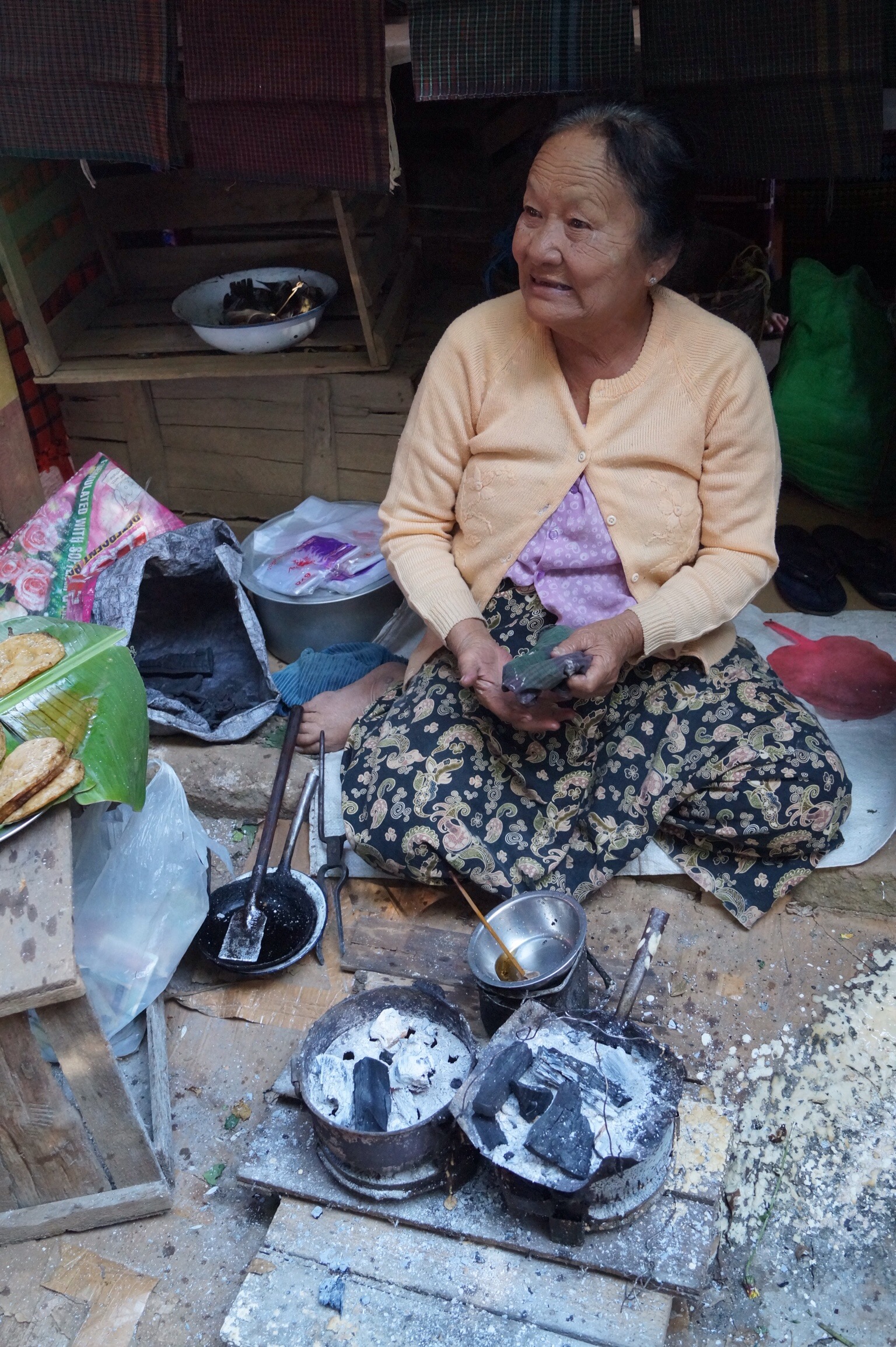
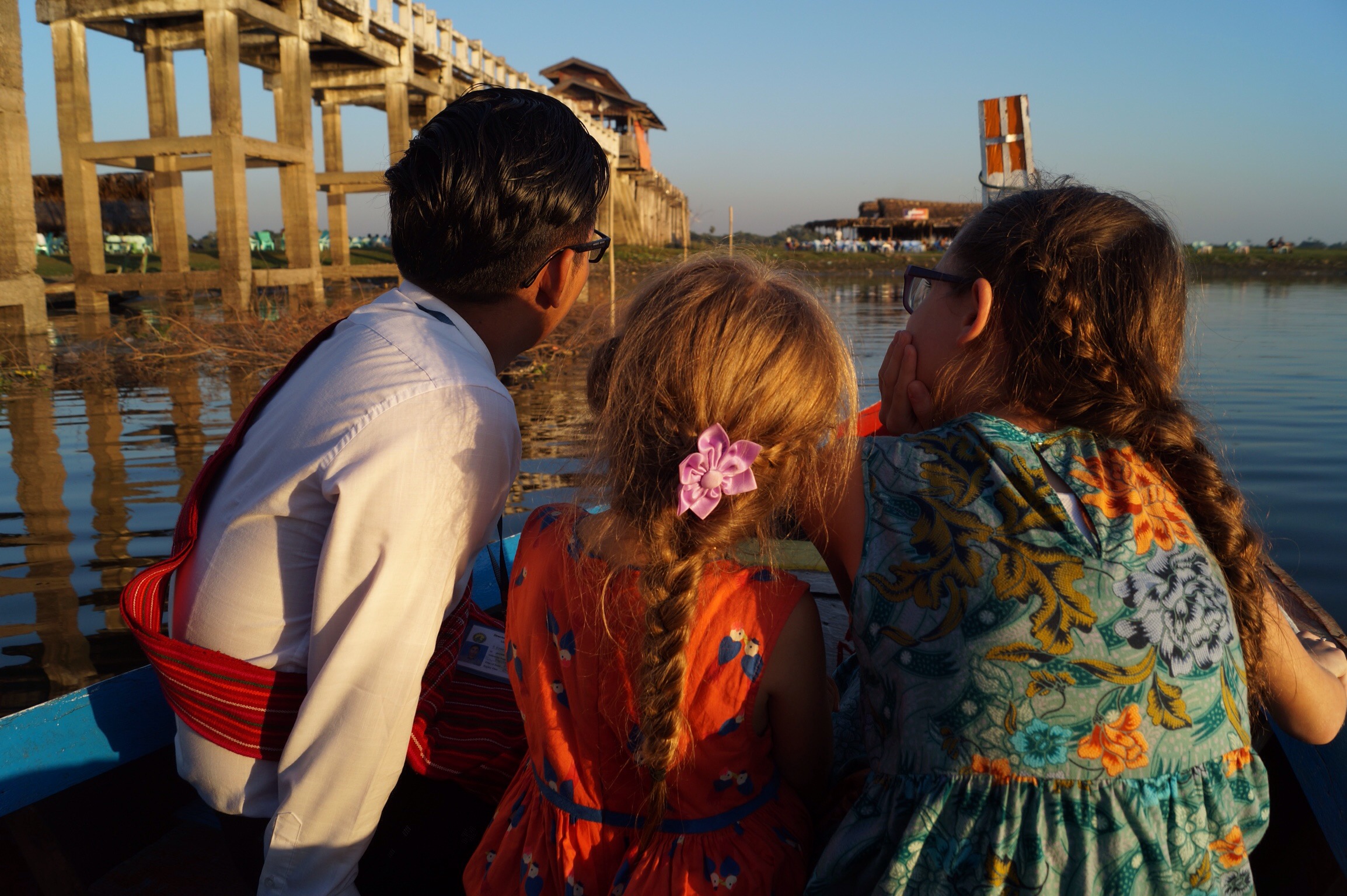


In Myanmar, boys usually join the monastery at two points in their lives, once as a novice at about 8 years old and again in their late teens. The boys can stay for a few days, weeks, months or even years. They may then decide to become a monk, it is totally up to them. There is a grand procession that take the boys to the monastery, there is music, dancers and relatives join in and there is a big meal there. Being a lake at Inle they travel by boat and we were lucky enough round a bend to see a Shinpyu ceremony in front of us, taking a young boy for his ordination at a nearby monastery. The little boy smartly dressed sat on a throne, his cheeks and lips rosy pink with make-up. He was looking a little apprehensive at all the fuss around him but his family smiled away at us.
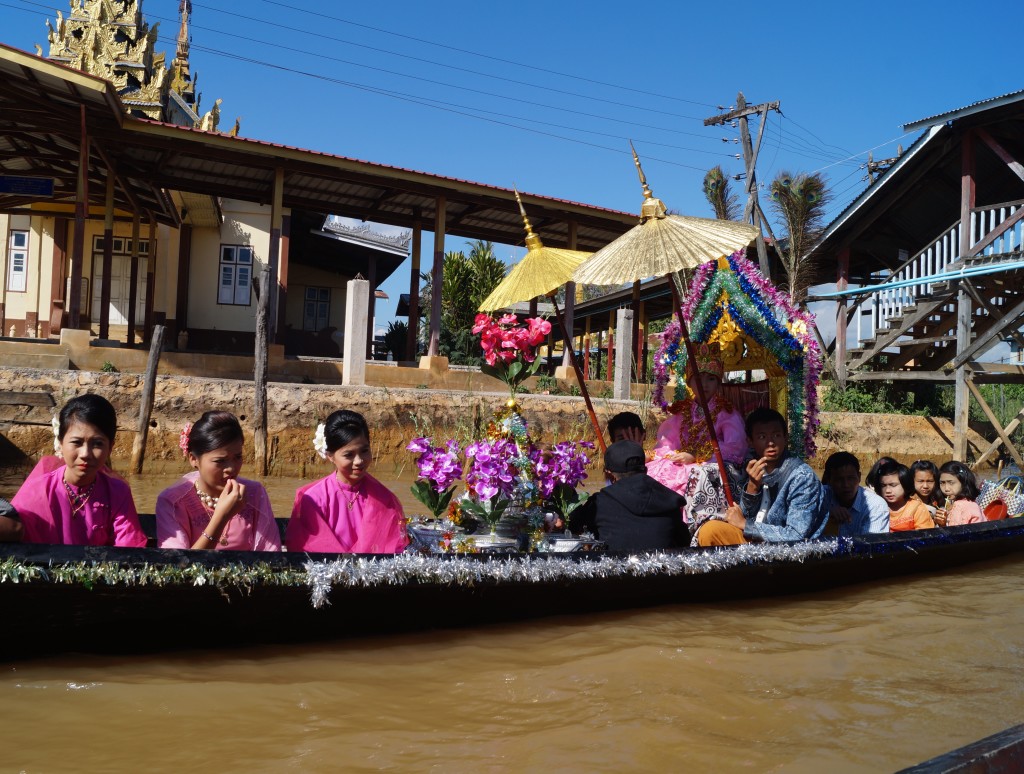
The traditional silver, paper, umbrella, boat building and weaving workshops might now be set up so tourists can buy directly from the manufacturers but there was no hard sell. It was interesting to see all the traditional crafts still being used, the whole of the pretty mulberry paper parasols shafts were made of bamboo. It must have been a pretty relaxing experience as I have a feeling even Steve was swayed to buy me a Christmas present at one of the stops, he is a notoriously reluctant shopper (secrets are hard to keep when you live as closely as we do).
Before we arrive in any new country, the girls and I drag out their Lonely Planet Kid's The Travel Book. With a page dedicated to every country in the world, it's been invaluable on this trip, as they love all the quirky and interesting facts. The number one thing they wanted to see in Myanmar: Nga Hpe Kyaung Monastery - otherwise known as the Jumping Cat Monastery on Inle Lake. The monks, in their downtime between studying Buddhist scriptures, had trained the monastery's mousers to jump through hoops. Unfortunately since someone died, we never found out if it was a monk or a cat, the cats are no longer so obliging. However the monastery was full of the sweet kittens, so that kept the girls happy even if the felines seemed far more keen on having an afternoon nap rather than jumping through any hoops for stupid humans. It also had a fine collection of ancient stupas. We also stopped at Phaung Daw Oo Paya a Buddhist temple where the 5 Buddha statues were so covered with gold leaf from worshippers that their actual shapes were no longer distinguishable.

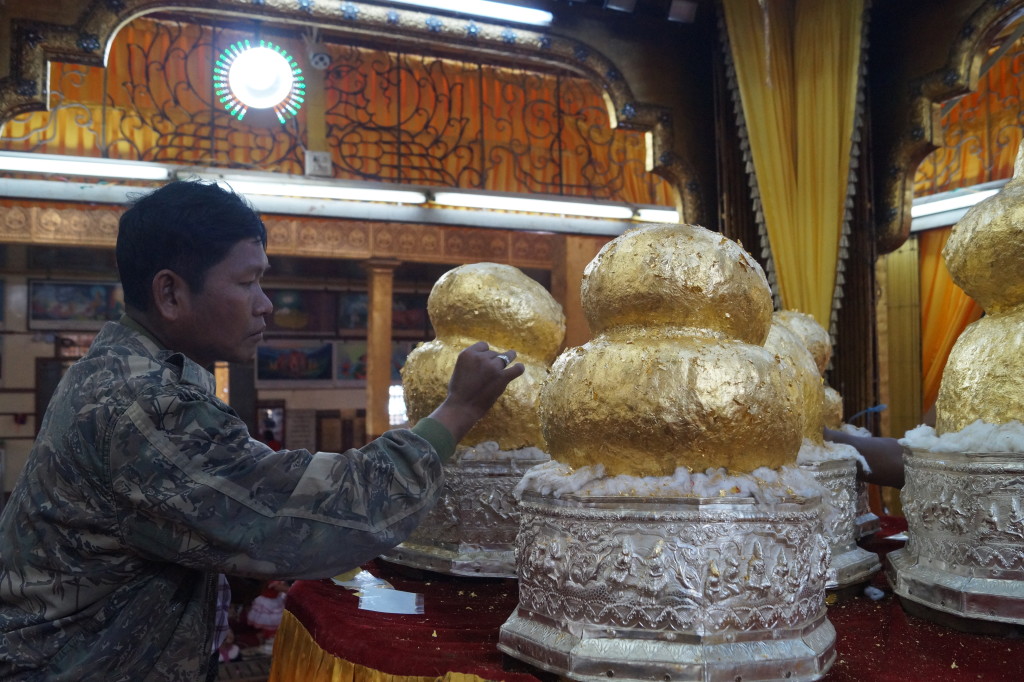
Market gardening flourishes in the lake, farmers build up a layer of waterweed, sawdust and soil over a few years to make a floating platform for their plants - natural hydroponics. Tomatoes and cucumbers seemed to be growing well while we were there, with lots of sunshine and water under their floating mats.
It was a long drive back over the hills and then northwards on the highway to Mandalay, at least the afternoon traffic wasn't as crazy as in Yangon. However we didn't get the best first impression of the city as we headed out on foot by ourselves in the dark early evening to find a place to eat. It was rush hour and it took us over an hour to find a place, not easy with vehicles rushing past; cars parked so they blocked the pavement; and big holes in the pavement with drops of a couple of feet into a nasty black sludge below. Walking back later was far easier as the traffic had completely eased as we came across a side street with bright lights, food stalls and music blaring. It turned out to be a collection of goods donated for monks at a monastery, there were fancy displays of towels, dishes, robes and bouquets of cash.
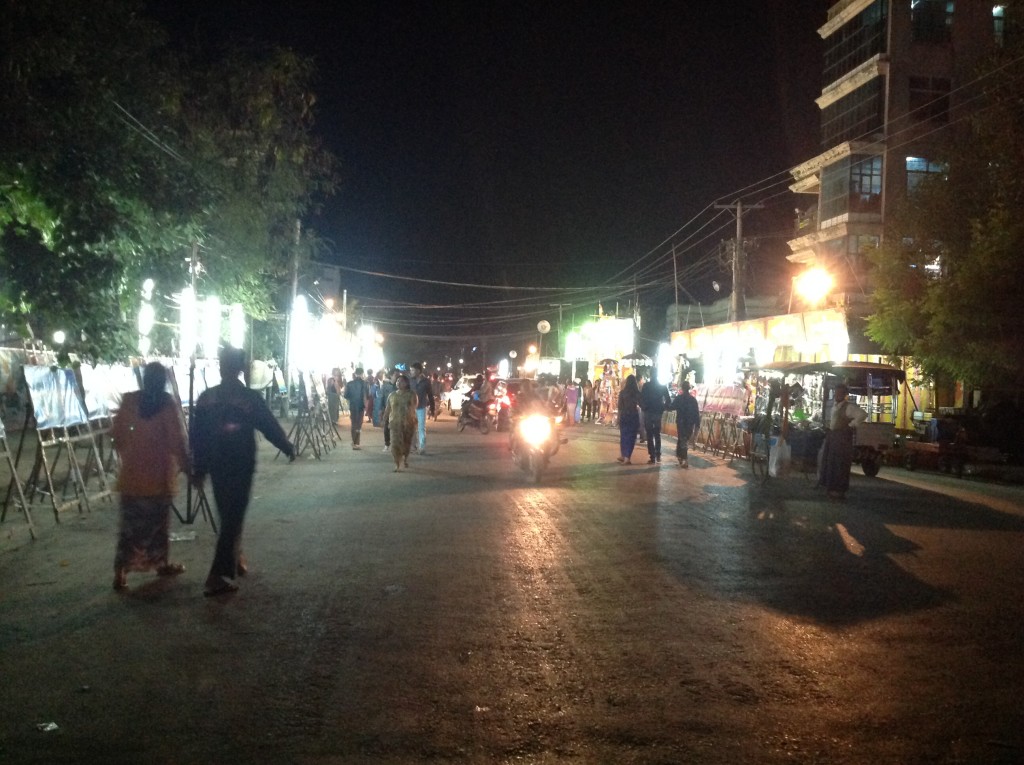
The next day, we played tourists seeing lots of the sites in Mandalay. There were several pagodas, the hill overlooking the town, the Royal palace and a look at the "World's Biggest Book". A 729 "page" tome made of marble with important Buddhist scripture in it. Each page is housed in its own little stupa. A couple of the pagodas were made of beautifully weathered teak wood, all beautifully carved from before the British took over in the Victorian era.
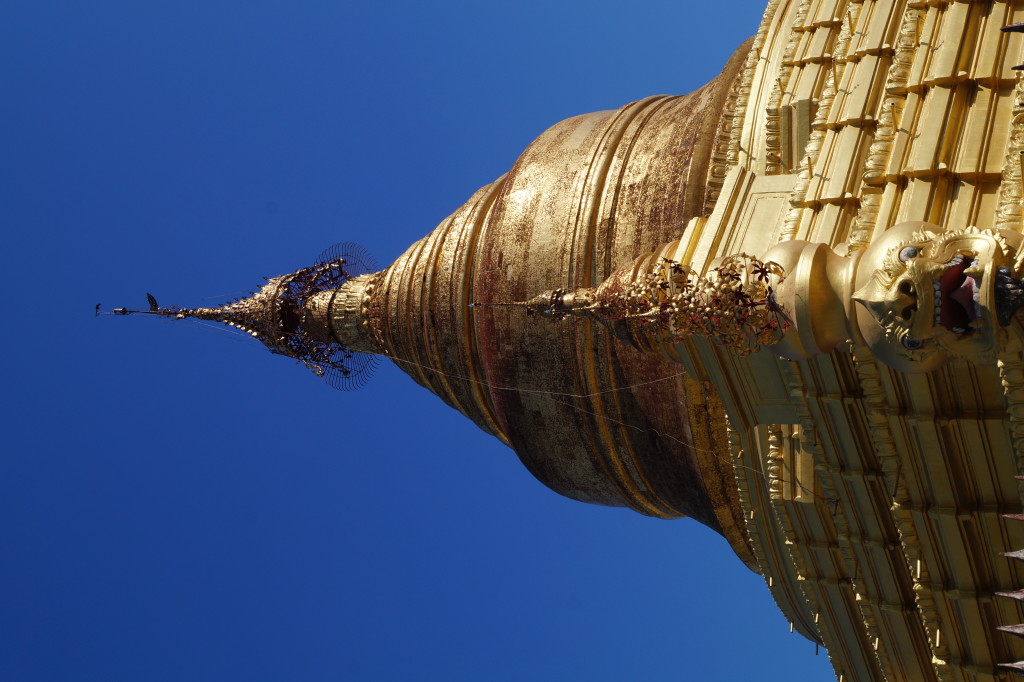
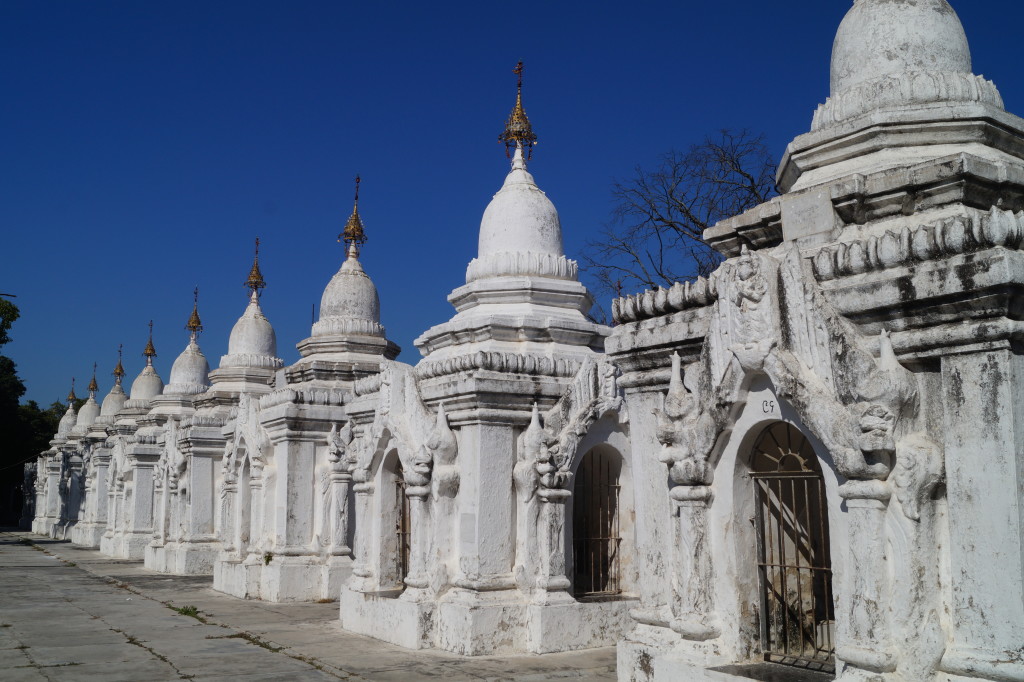
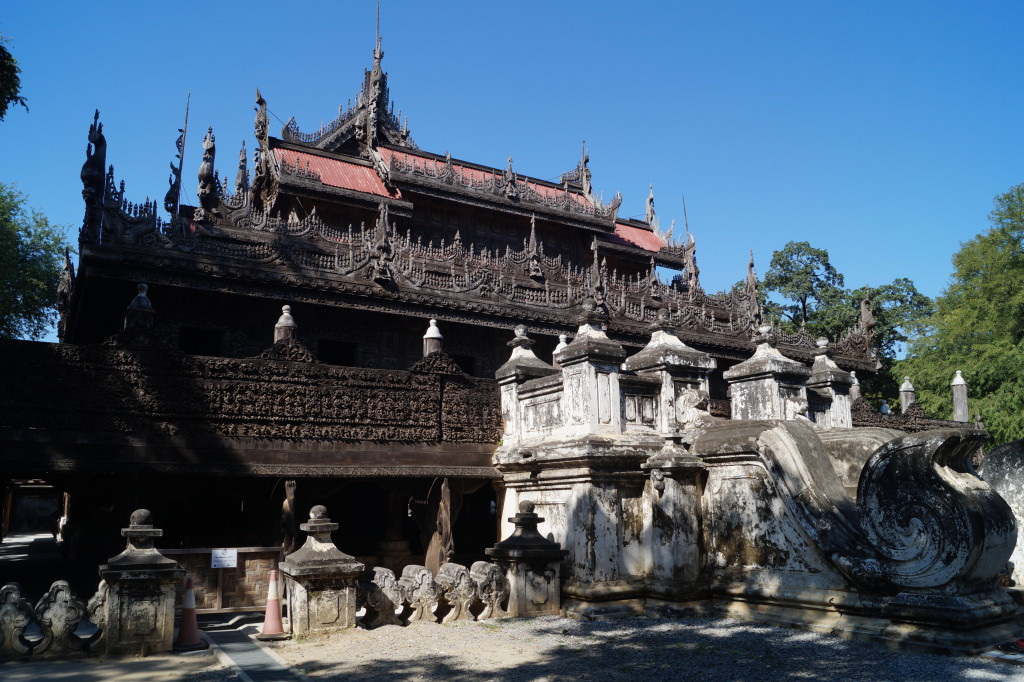
Steve and I had been tempted to watch the ceremonial washing of the Buddha image at Mahamuni Paya but were soon voted out by the rest of the family when they learned that it occurred at 4am. It's supposed to be a beautiful ceremony attended by the faithful. We still saw lots of pilgrims from the countryside when we attended at a far more sociable hour. The 2000 year old statue has now been so covered in gold leaf by devotees, that everything but its gleaming face has developed a rather gnarled and knobbly appearance. As in many of the temples here, only men are allowed to get close to the statue.

We finished the day at the 1.2km teak U-Bein Bridge over a lake. Taking a rowing boat out to avoid some of the crowds it made an beautiful sight with the sun setting behind it.
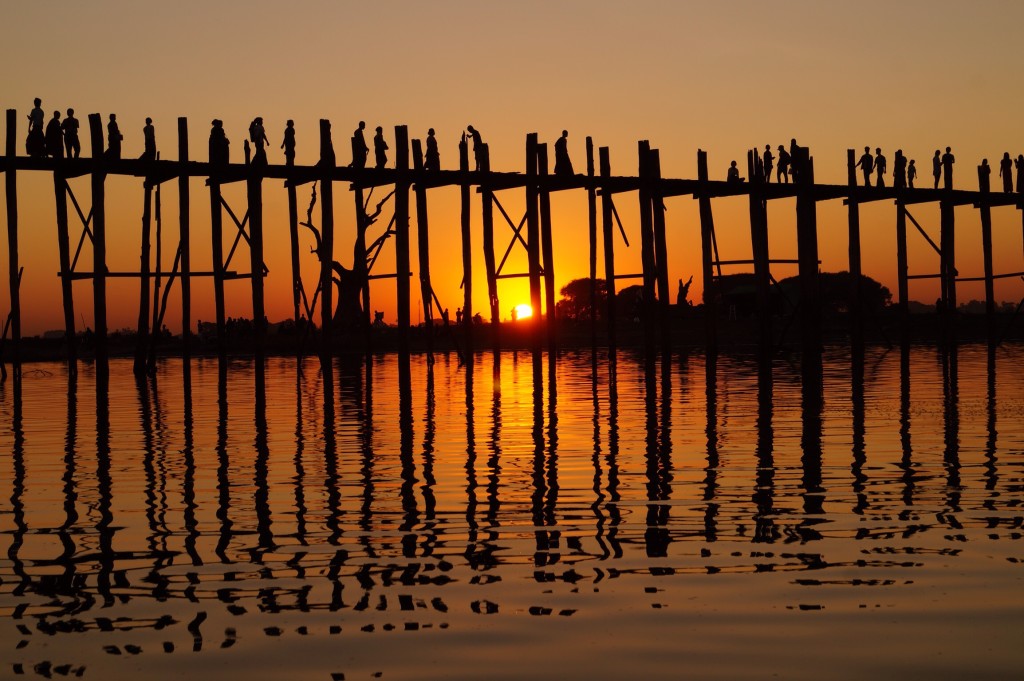
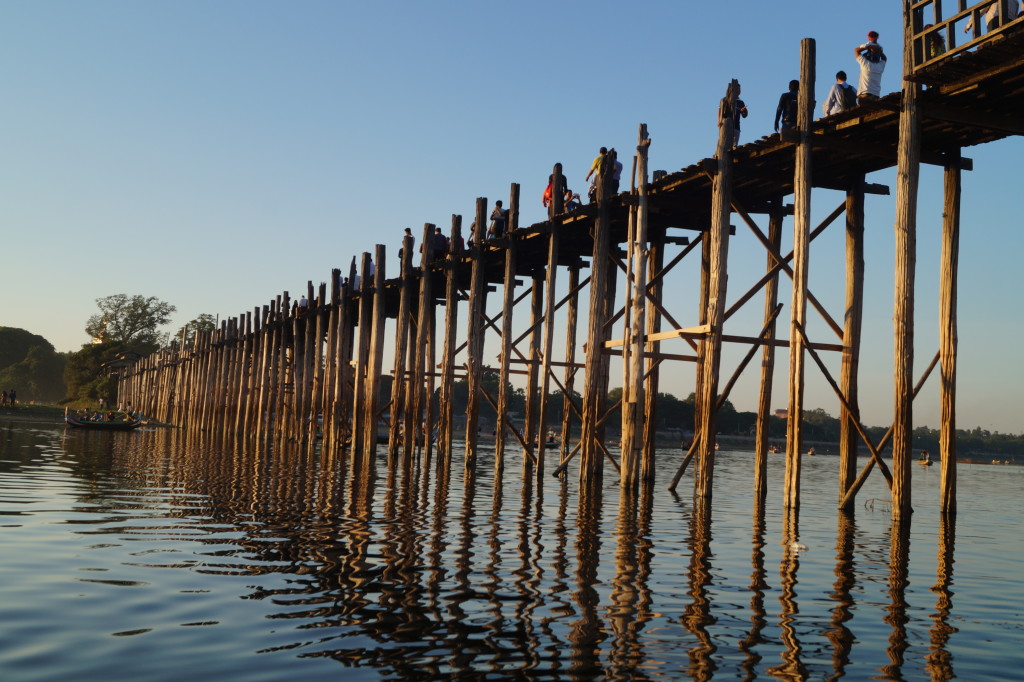
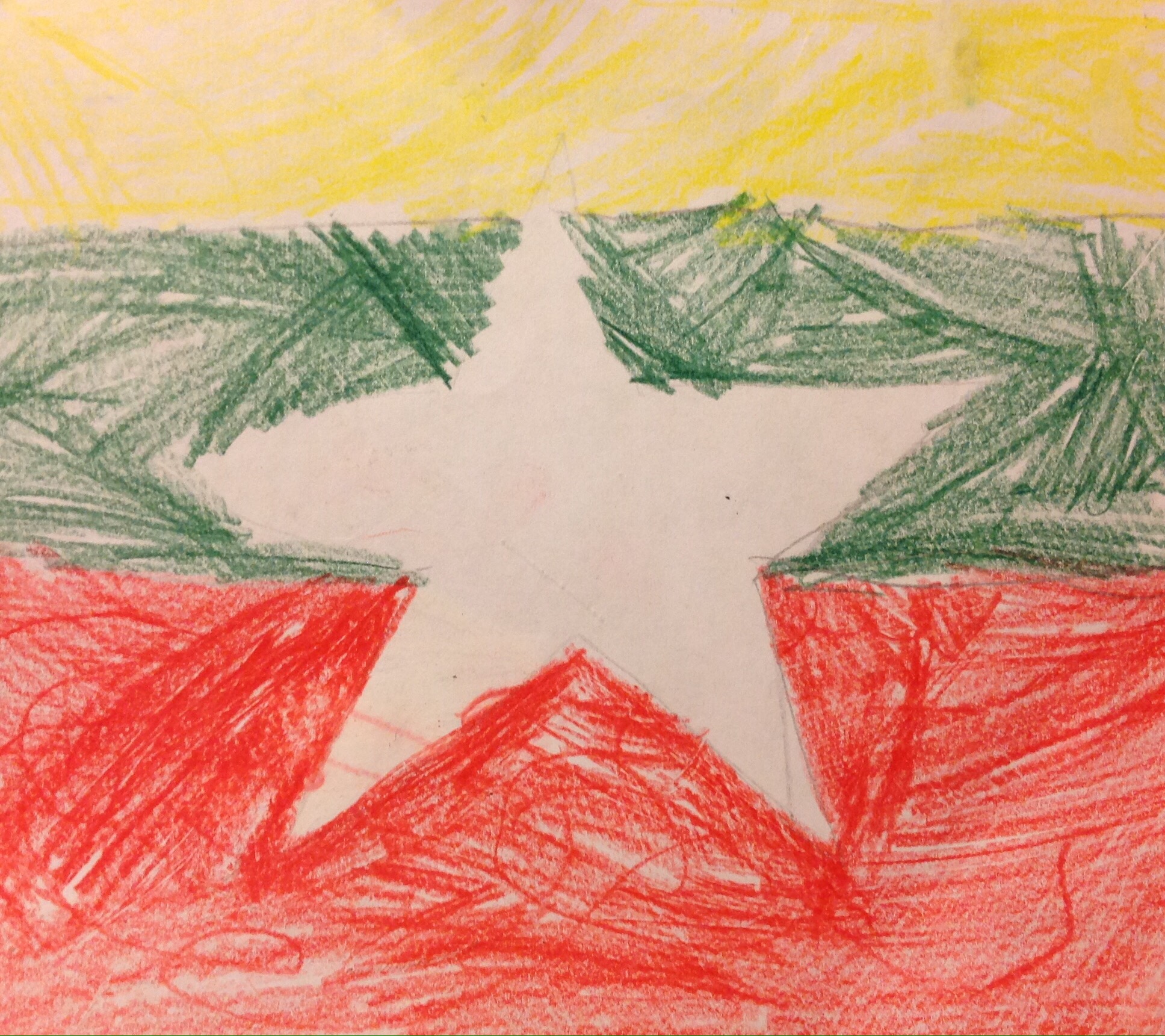 Lucy
When we went to Myanmar we had to have a guide with us there where three guides called Jo, Jo and Tante ( that's how you say it not how you spell it, the iPad would tell us it's wrong if we wrote how you really spell it)
We had to stay in more hotels than we usually do because the guides needed to stay in town, although they didn't usually stay in the same hotel.
We went to loads of pagodas, we went to this giant lying down Buddha where a lady wanted a photo with me and she gave me her necklace. We saw her later on at the war cemetery and she was really happy to see us again. We went to loads more wats, my favourite was another lying down Buddha where there were 4 adorable kittens. I got them to chase my necklace they jumped up high to get it. One of them got their claws stuck in it and when I waggled it, it looked like she was shaking paws.
Lucy
When we went to Myanmar we had to have a guide with us there where three guides called Jo, Jo and Tante ( that's how you say it not how you spell it, the iPad would tell us it's wrong if we wrote how you really spell it)
We had to stay in more hotels than we usually do because the guides needed to stay in town, although they didn't usually stay in the same hotel.
We went to loads of pagodas, we went to this giant lying down Buddha where a lady wanted a photo with me and she gave me her necklace. We saw her later on at the war cemetery and she was really happy to see us again. We went to loads more wats, my favourite was another lying down Buddha where there were 4 adorable kittens. I got them to chase my necklace they jumped up high to get it. One of them got their claws stuck in it and when I waggled it, it looked like she was shaking paws.
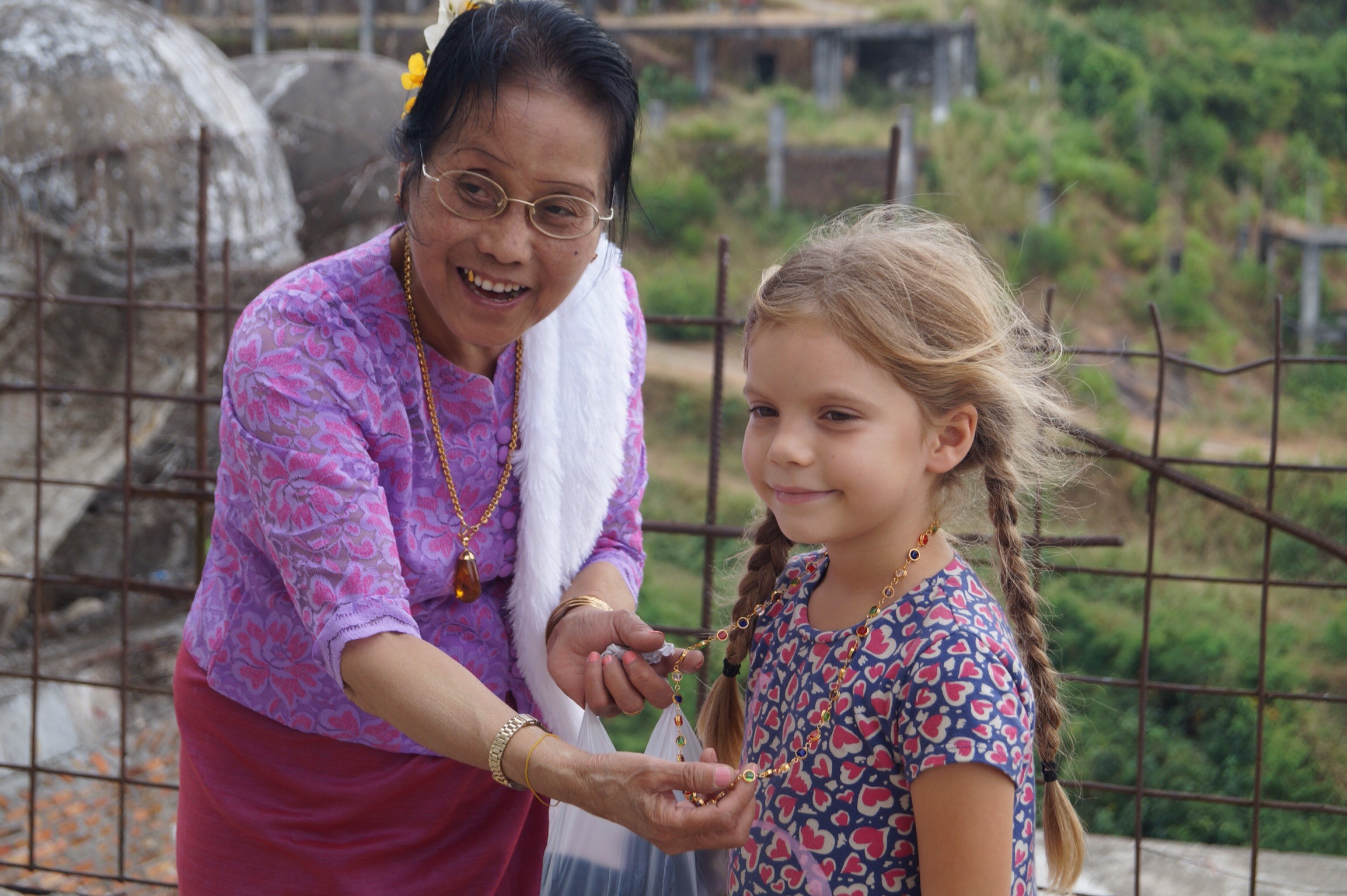
 We went to a big gold rock that was said to be balanced on Buddha's hair. Only men were allowed to touch it. Alisha said it looked like one push would send it toppling and send it toppling to squash loads of people but Jo told us that there had been an earthquake years before and it hadn't even fallen then. We went below it and there was loads of paper fluttering down, it was the paper from the gold leaf that people had stuck on the rock. Then the wind blew and it started raining gold. We tried to collect but there wasn't much gold when it was all squashed up.
We went to a lake, where we fed the seagulls and we saw fishermen paddling with their legs. It looked absurd but worked as the fisherman caught lots of fish. We went to a market where me and Alisha brought a silver fish, it was female because it wiggled up and down, and an old fashioned weighing scales. We went to a silver place where they were making a full moon biscuit and more fish out of silver - we bought Mummy a full moon for Christmas. We went to lots of places that day, my favourite place was the Jumping Cat Monastery but the cats weren't jumping they were too busy having a nap but they were very cute.
Jo the guide, liked playing chase with me but he had to tuck his longhi up and make it into shorts but he never beat me. He was also very good at playing Uno but didn't beat me again.
We went to a big gold rock that was said to be balanced on Buddha's hair. Only men were allowed to touch it. Alisha said it looked like one push would send it toppling and send it toppling to squash loads of people but Jo told us that there had been an earthquake years before and it hadn't even fallen then. We went below it and there was loads of paper fluttering down, it was the paper from the gold leaf that people had stuck on the rock. Then the wind blew and it started raining gold. We tried to collect but there wasn't much gold when it was all squashed up.
We went to a lake, where we fed the seagulls and we saw fishermen paddling with their legs. It looked absurd but worked as the fisherman caught lots of fish. We went to a market where me and Alisha brought a silver fish, it was female because it wiggled up and down, and an old fashioned weighing scales. We went to a silver place where they were making a full moon biscuit and more fish out of silver - we bought Mummy a full moon for Christmas. We went to lots of places that day, my favourite place was the Jumping Cat Monastery but the cats weren't jumping they were too busy having a nap but they were very cute.
Jo the guide, liked playing chase with me but he had to tuck his longhi up and make it into shorts but he never beat me. He was also very good at playing Uno but didn't beat me again.
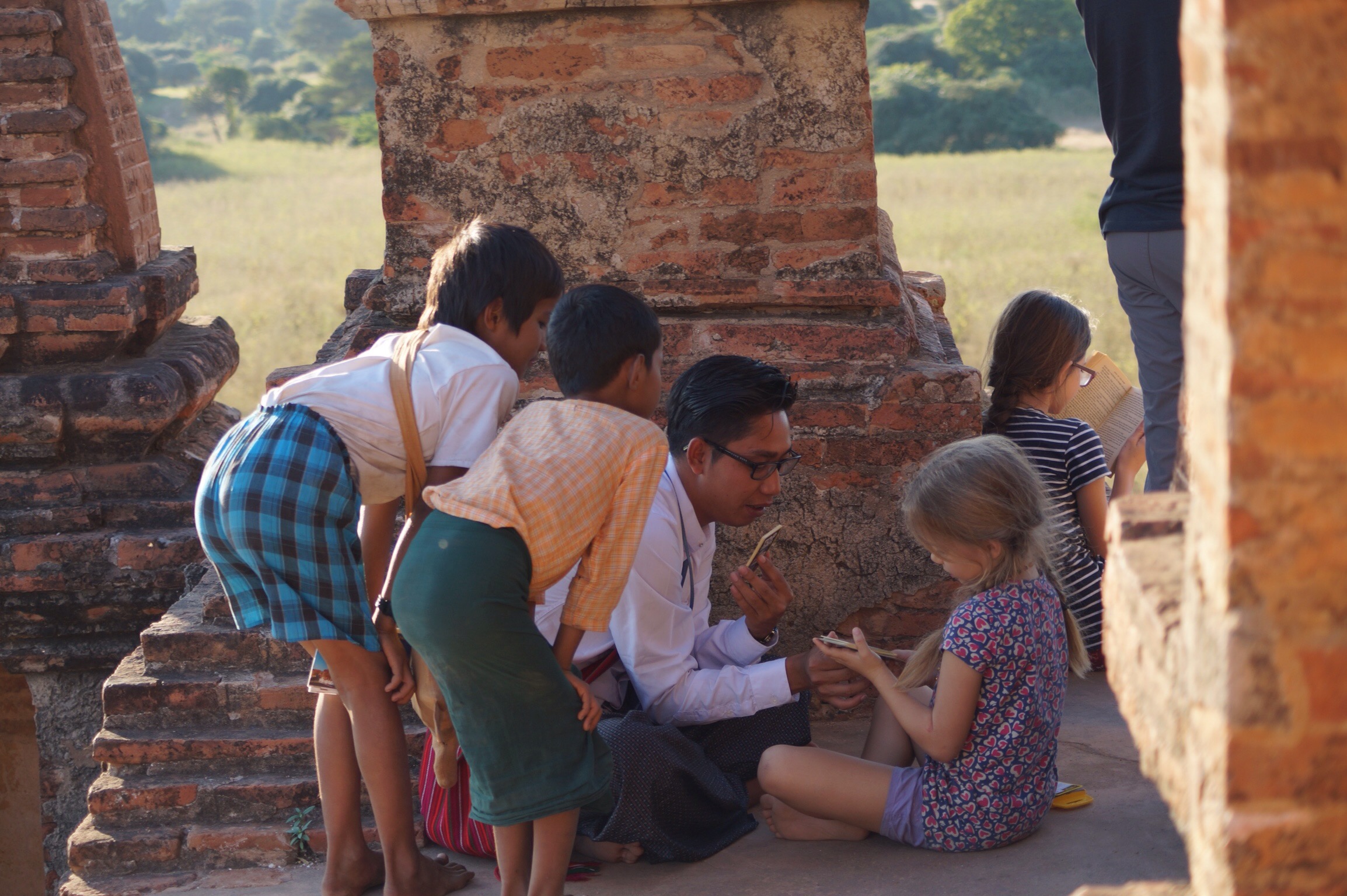 We left Myanmar with heavy hearts as we had to say goodbye to all the lovely people as we went up into the mountains to India. But not before Tante (our government minder) got one last photo with me, he loved taking photos and took photos of us wherever we went.
Alisha
Myanmar was an interesting country. We had a guide for most of Myanmar which was kind of weird as we are used to driving on our own but it was useful for languages and rides to the tourist attractions (and of course so Lucy could have someone else to annoy who wasn't me). But it was a bit annoying when in a town they would overtake all the vehicles in front of them and we would be behind six cars plus a hundred motorbikes and they were also a lot faster then us.
I wasn't super keen on all the temples and it was a lot worse when Lucy was in a boisterous mood especially when it involved lots of standing on my toes and head- butting me. Burmese food isn't as famous as let's say Thai but it is good. It involves lots of curries for lunch and a stir-fry for dinner, all served with enough rice to out weigh an elephant. We read in our book that people in Myanmar eat 195 kg of rice a year and Europeans only eat 3 kg! Me and Lucy mostly ate fried rice for lunch by the end of Myanmar we had enough. I don't think we will be eating that again any time soon.
We left Myanmar with heavy hearts as we had to say goodbye to all the lovely people as we went up into the mountains to India. But not before Tante (our government minder) got one last photo with me, he loved taking photos and took photos of us wherever we went.
Alisha
Myanmar was an interesting country. We had a guide for most of Myanmar which was kind of weird as we are used to driving on our own but it was useful for languages and rides to the tourist attractions (and of course so Lucy could have someone else to annoy who wasn't me). But it was a bit annoying when in a town they would overtake all the vehicles in front of them and we would be behind six cars plus a hundred motorbikes and they were also a lot faster then us.
I wasn't super keen on all the temples and it was a lot worse when Lucy was in a boisterous mood especially when it involved lots of standing on my toes and head- butting me. Burmese food isn't as famous as let's say Thai but it is good. It involves lots of curries for lunch and a stir-fry for dinner, all served with enough rice to out weigh an elephant. We read in our book that people in Myanmar eat 195 kg of rice a year and Europeans only eat 3 kg! Me and Lucy mostly ate fried rice for lunch by the end of Myanmar we had enough. I don't think we will be eating that again any time soon.
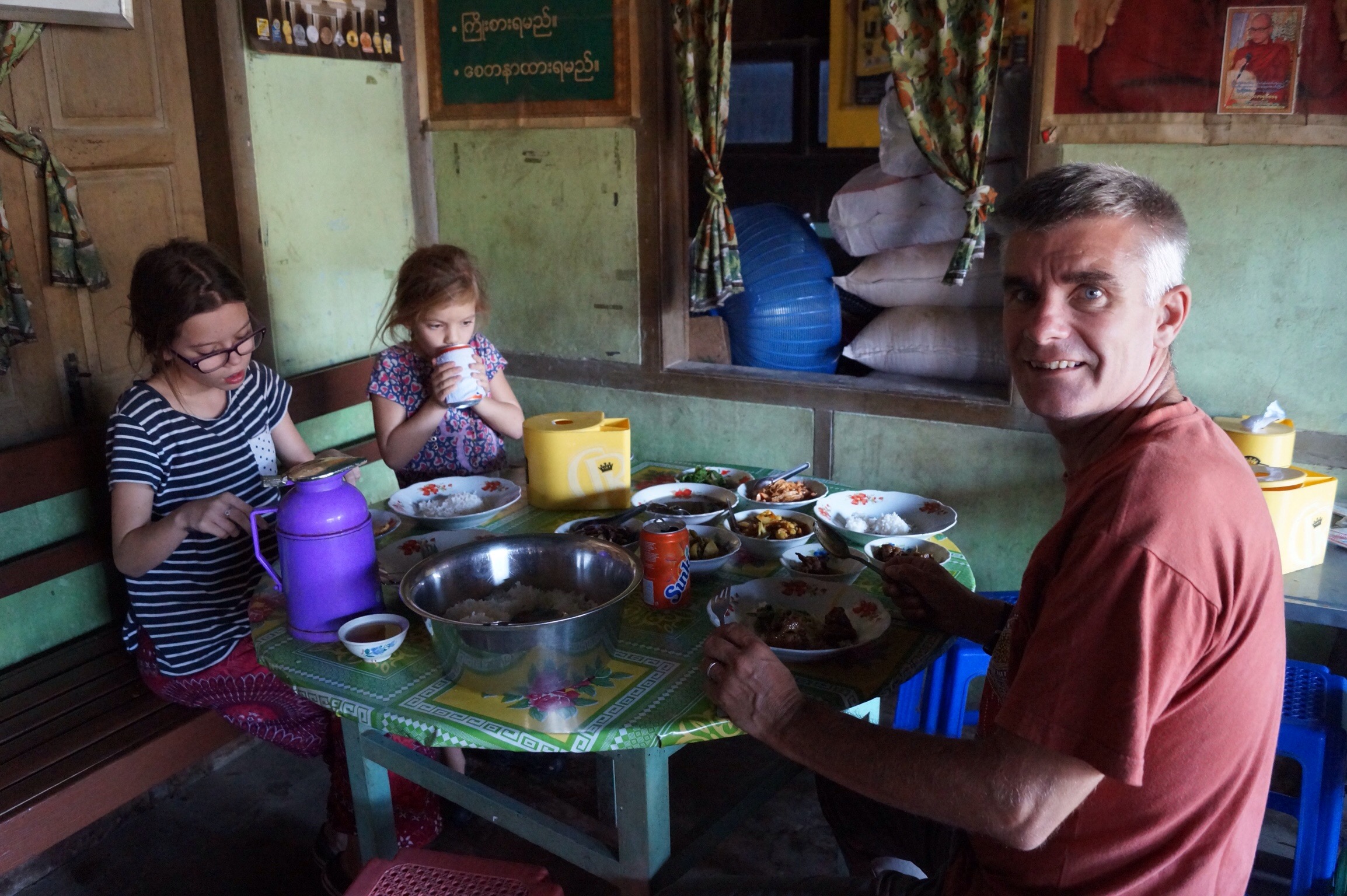 In one of the temples daddy had to wear a longi he looked very silly, me and Lucy laughed and laughed. Men from Myanmar mostly wear longhis all the time and it looked good on them but strange on Daddy.
In one of the temples daddy had to wear a longi he looked very silly, me and Lucy laughed and laughed. Men from Myanmar mostly wear longhis all the time and it looked good on them but strange on Daddy.
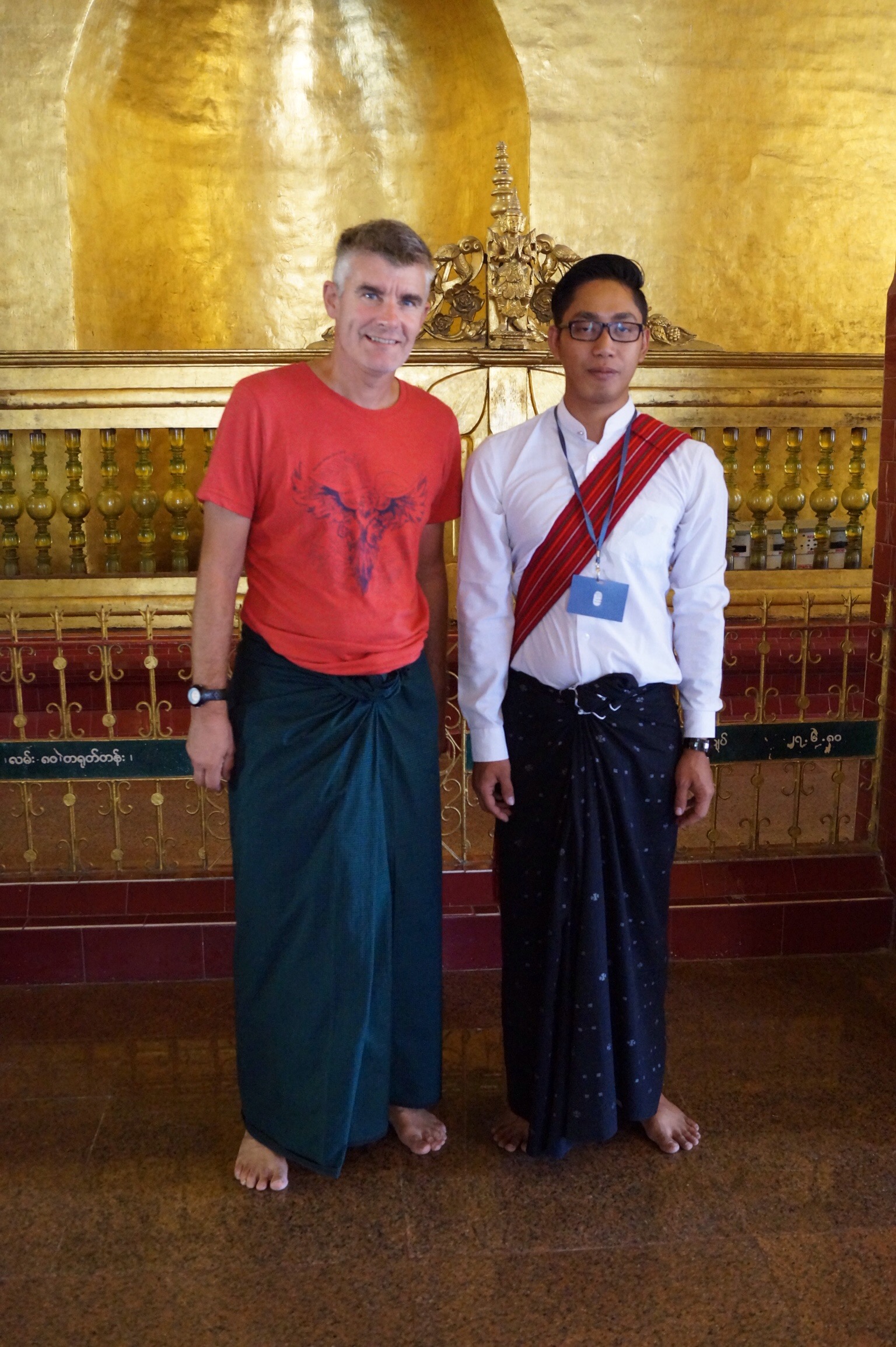 All in all I enjoyed Myanmar though it's very difficult to enjoy a Bagan temple sunrise when someone is standing on your toes.
Gilly
Sometimes changing countries isn't too much of a surprise but as soon was we crossed the border from Thailand it felt like we had entered somewhere very different. As the girls and I waited for Steve to complete customs we watched ladies with a yellow paste on their faces; men in longhis (sarongs); and then a procession of maroon robed monks collecting their morning alms. Then the national anthem struck up and everyone stood to attention, at the end lots of the men saluted.
Thanaka is a light yellow paste made from a type of bark, it is both a cooling beauty cream and sunscreen. It Is worn by the majority of women, children and even some men. What delighted the girls and I was that everyone puts on their own design everyday. Ladies usually chose something elegant like circles, hearts, squiggles or even leaves on their cheeks, foreheads and chin. Much like I apply sunscreen to my girls, mums seem to slather it on their kids' whole faces as we saw on the little ones on their way to school or draw a cute design on babies. You can buy ready made pots but most people prefer to grind their own on a special flat stone every morning. We noticed that portable thanaka stones were popular souvenirs for local pilgrims at the tourist spots. At one of the temples in Mandalay a girl kindly drew a leaf design on my cheeks, it felt lovely and cool.
All in all I enjoyed Myanmar though it's very difficult to enjoy a Bagan temple sunrise when someone is standing on your toes.
Gilly
Sometimes changing countries isn't too much of a surprise but as soon was we crossed the border from Thailand it felt like we had entered somewhere very different. As the girls and I waited for Steve to complete customs we watched ladies with a yellow paste on their faces; men in longhis (sarongs); and then a procession of maroon robed monks collecting their morning alms. Then the national anthem struck up and everyone stood to attention, at the end lots of the men saluted.
Thanaka is a light yellow paste made from a type of bark, it is both a cooling beauty cream and sunscreen. It Is worn by the majority of women, children and even some men. What delighted the girls and I was that everyone puts on their own design everyday. Ladies usually chose something elegant like circles, hearts, squiggles or even leaves on their cheeks, foreheads and chin. Much like I apply sunscreen to my girls, mums seem to slather it on their kids' whole faces as we saw on the little ones on their way to school or draw a cute design on babies. You can buy ready made pots but most people prefer to grind their own on a special flat stone every morning. We noticed that portable thanaka stones were popular souvenirs for local pilgrims at the tourist spots. At one of the temples in Mandalay a girl kindly drew a leaf design on my cheeks, it felt lovely and cool.
 Myanmar has gone through some very big political changes over the last year, with the Military Junta slowly relinquishing power to the democratically elected government. Our 3 year old guidebook warned that we shouldn't talk to people about politics but people spoke to us openly about their support for the changes and Aung San Suu Kyi's National League for Democracy. They said people were happy with the changes and that things were very rapidly changing within the country. We did see a very alarming sign outside the Royal palace, which is in a military base, in Mandalay. Kyaw said that there are signs like this all over the country, the only difference here was it was written in English.
Myanmar has gone through some very big political changes over the last year, with the Military Junta slowly relinquishing power to the democratically elected government. Our 3 year old guidebook warned that we shouldn't talk to people about politics but people spoke to us openly about their support for the changes and Aung San Suu Kyi's National League for Democracy. They said people were happy with the changes and that things were very rapidly changing within the country. We did see a very alarming sign outside the Royal palace, which is in a military base, in Mandalay. Kyaw said that there are signs like this all over the country, the only difference here was it was written in English.
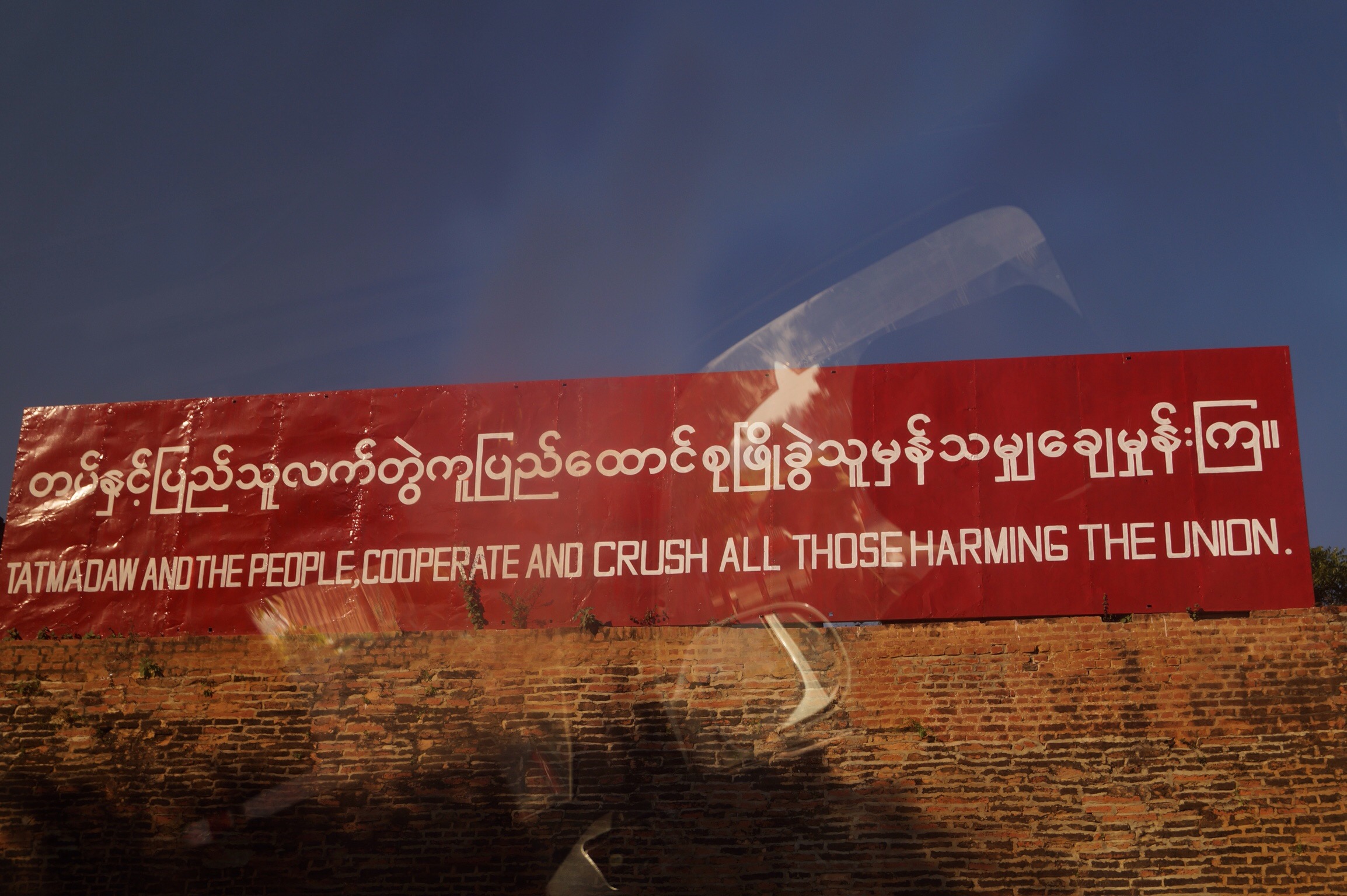 We found the people of Myanmar (the Burmese are only one group) very friendly and pleased to meet foreigners. For instance, one night we were just quietly deliberating if some pancakes from a roadside stall would make a good desert, when a guy also waiting, bought us a bag full. Blonde Lucy was a hit wherever we went with her, it was a bit like travelling with a minor royal, everywhere people wanted a photo with her. She gallantly smiled her way through hundreds of snaps, we often joined in too. Thantay, our government minder, was constantly taking photos and videos of us especially when we were enjoying the sights. His English was very limited so we never fully found out if it was just a hobby; he was showing his bosses that we weren't up to mischief; or it was for the Tourism department's PR. Maybe we'll find ourselves stars of a visit Myanmar campaign in the future, we think it is definitely worth a visit.
We found the people of Myanmar (the Burmese are only one group) very friendly and pleased to meet foreigners. For instance, one night we were just quietly deliberating if some pancakes from a roadside stall would make a good desert, when a guy also waiting, bought us a bag full. Blonde Lucy was a hit wherever we went with her, it was a bit like travelling with a minor royal, everywhere people wanted a photo with her. She gallantly smiled her way through hundreds of snaps, we often joined in too. Thantay, our government minder, was constantly taking photos and videos of us especially when we were enjoying the sights. His English was very limited so we never fully found out if it was just a hobby; he was showing his bosses that we weren't up to mischief; or it was for the Tourism department's PR. Maybe we'll find ourselves stars of a visit Myanmar campaign in the future, we think it is definitely worth a visit.
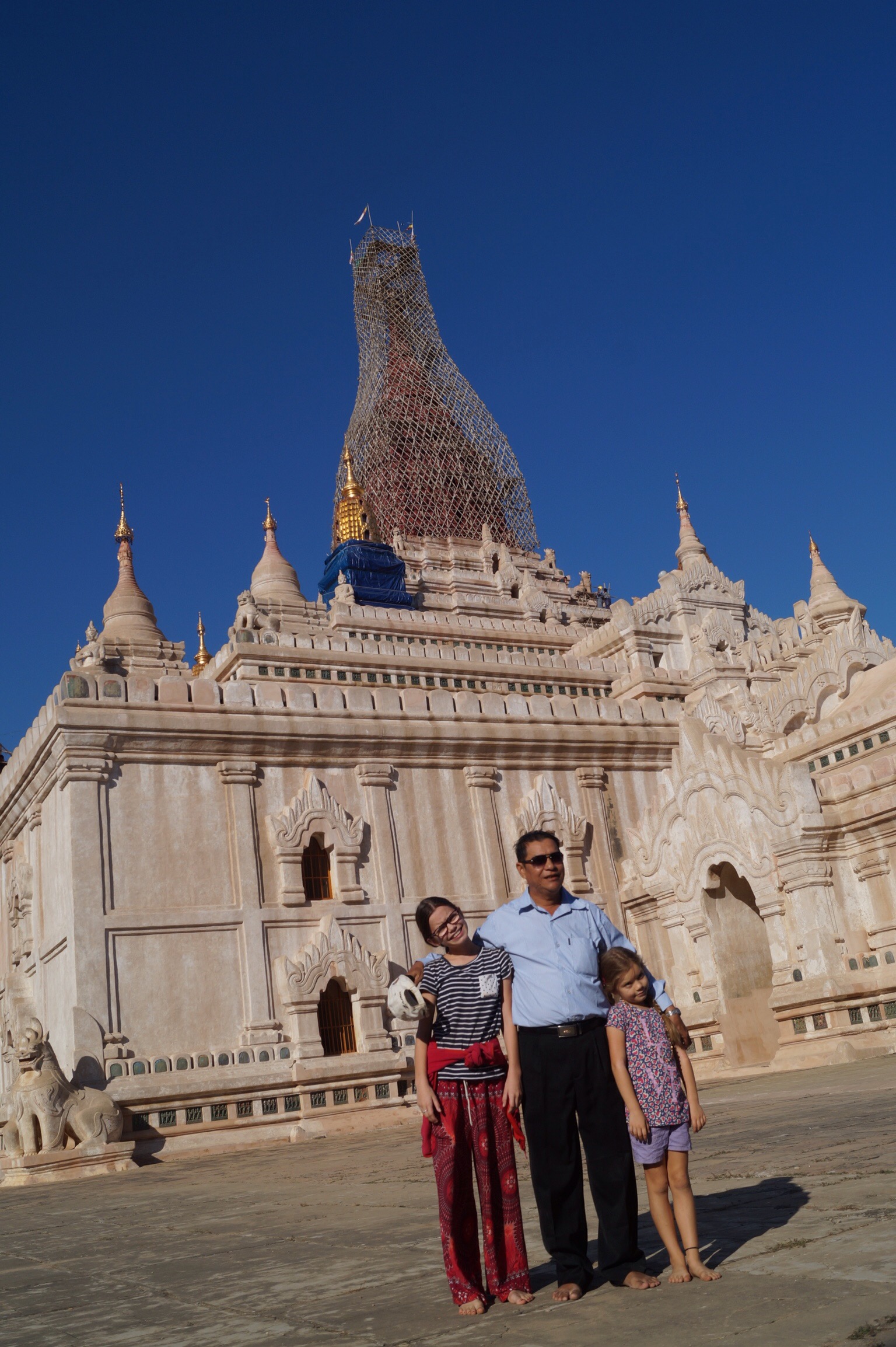 Steve
It was strange to have a guide through Myanmar after all the Kms we had done by ourselves but we were really pleased to get such a great guide and driver. We were never very sure what the role of the representative from the Ministry of Tourism was but he was also very nice and helped out when there was some confusion. It was great to be able to transit Myanmar and also to see some of its wonderful sights. Bagan was very special especially at sunrise and the Shwedagon Pagoda in Yangon was amazing.
Steve
It was strange to have a guide through Myanmar after all the Kms we had done by ourselves but we were really pleased to get such a great guide and driver. We were never very sure what the role of the representative from the Ministry of Tourism was but he was also very nice and helped out when there was some confusion. It was great to be able to transit Myanmar and also to see some of its wonderful sights. Bagan was very special especially at sunrise and the Shwedagon Pagoda in Yangon was amazing.
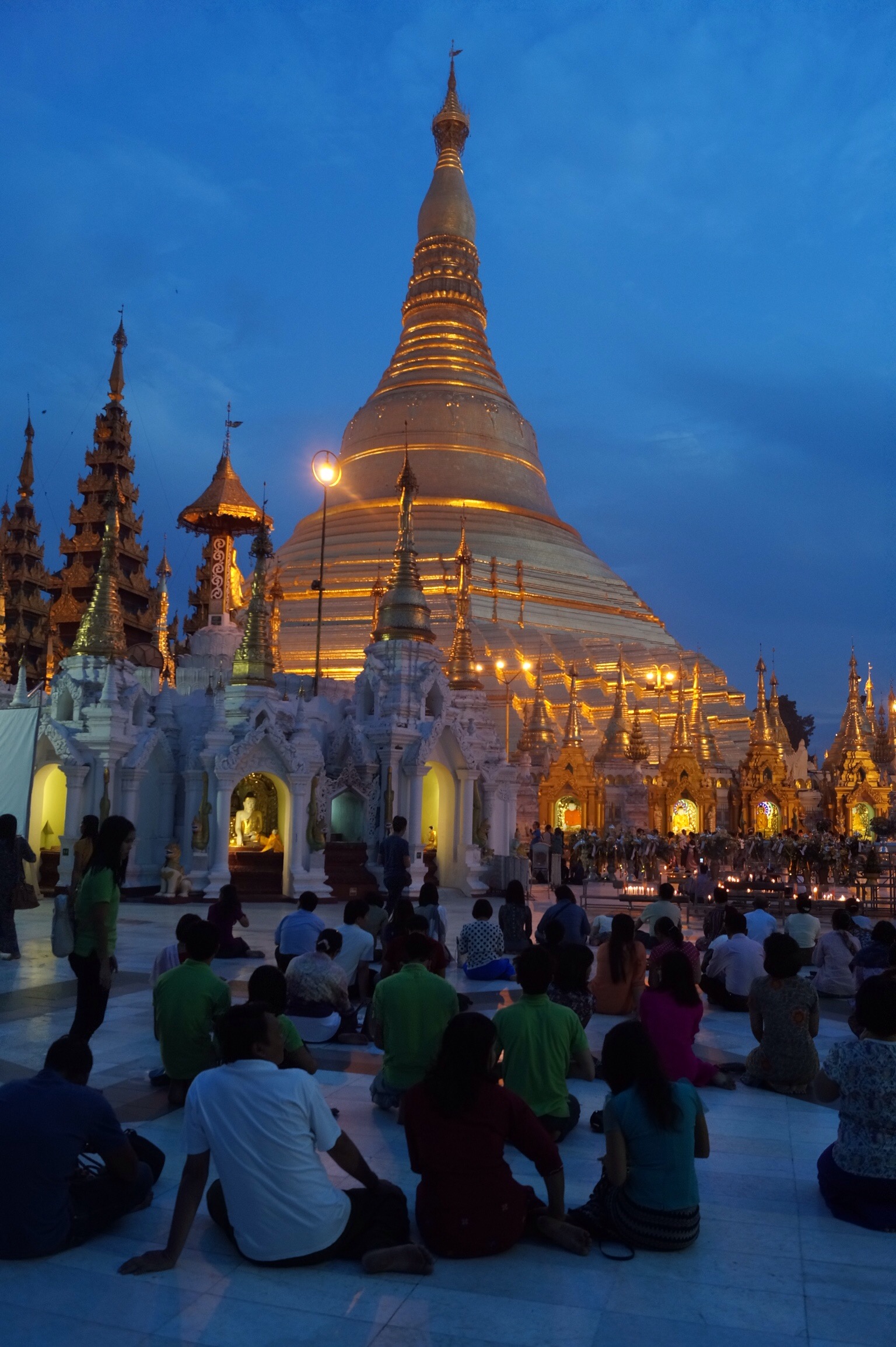 Myanmar feels different to the rest of South East Asia. In parts it felt more like India but as we came to know the country better I think it just has its own distinctive flavour. Tourism is still in its relative infancy and the country is still at the beginning of its development. Roads were still been built effectively by hand and we saw some children working both on the roads and in restaurants.
Myanmar feels different to the rest of South East Asia. In parts it felt more like India but as we came to know the country better I think it just has its own distinctive flavour. Tourism is still in its relative infancy and the country is still at the beginning of its development. Roads were still been built effectively by hand and we saw some children working both on the roads and in restaurants.
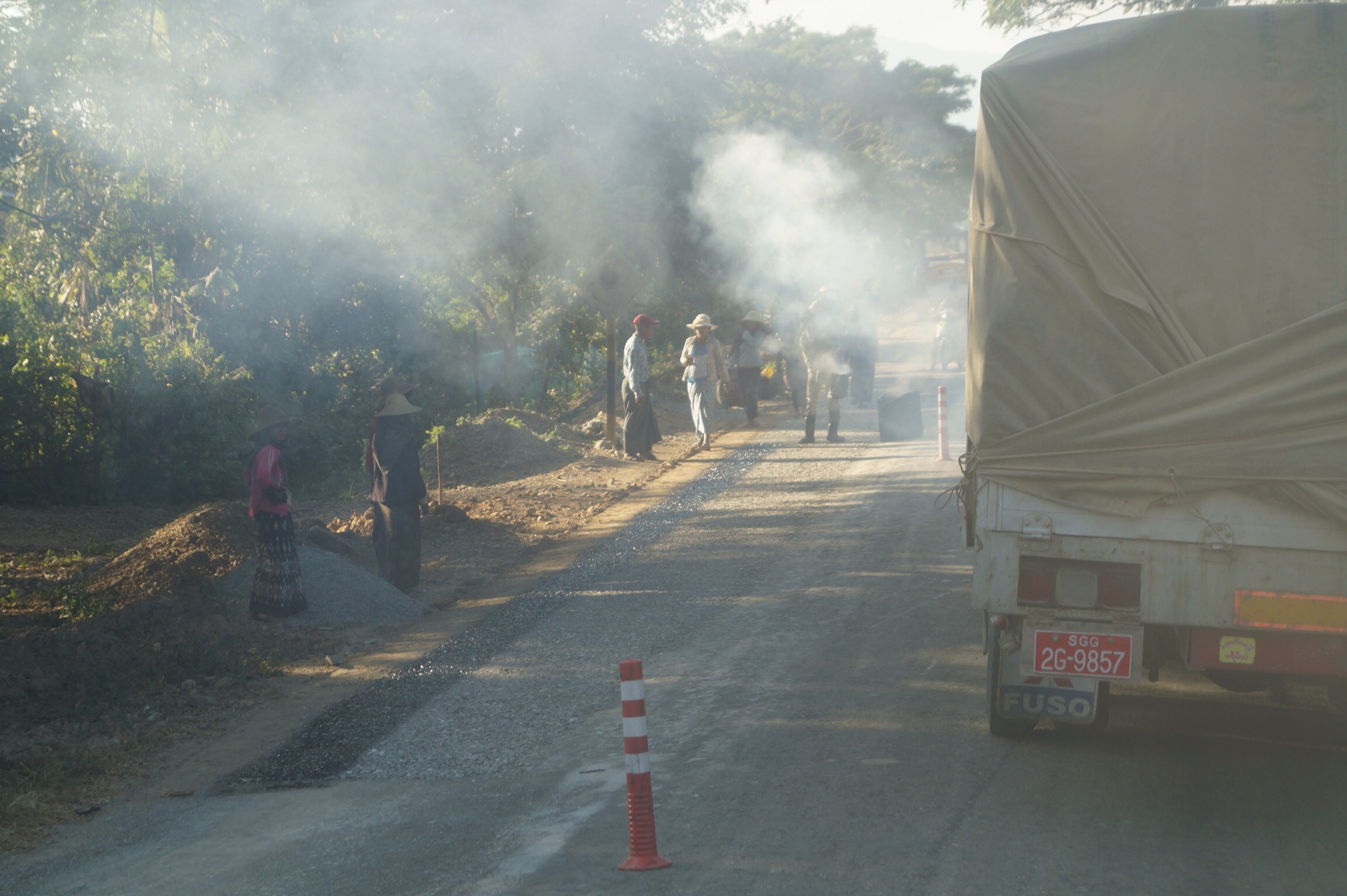 There were also a lot of contradictions in Myanmar. My favourite was the road system. In the 1960s the country switched to driving on the right hand side of the road (the European side) as the other side was a vestige of British colonialism. However most (90%) of their cars and some of the trucks are imported from Japan so have their steering wheels on the right hand (wrong) side. Overtaking is already challenging but this made it doubly so for the drivers. Bizarrely the toll booths are set up to accommodate the steering wheels that are on the wrong side and are also conveniently placed on the wrong side too.
Overall it was a great two weeks, certainly different for us but the guide and driver made sure everything went smoothly and took care of everything for us. It was quite a shock to arrive in India and have to start doing everything for ourselves again.
There were also a lot of contradictions in Myanmar. My favourite was the road system. In the 1960s the country switched to driving on the right hand side of the road (the European side) as the other side was a vestige of British colonialism. However most (90%) of their cars and some of the trucks are imported from Japan so have their steering wheels on the right hand (wrong) side. Overtaking is already challenging but this made it doubly so for the drivers. Bizarrely the toll booths are set up to accommodate the steering wheels that are on the wrong side and are also conveniently placed on the wrong side too.
Overall it was a great two weeks, certainly different for us but the guide and driver made sure everything went smoothly and took care of everything for us. It was quite a shock to arrive in India and have to start doing everything for ourselves again. 


